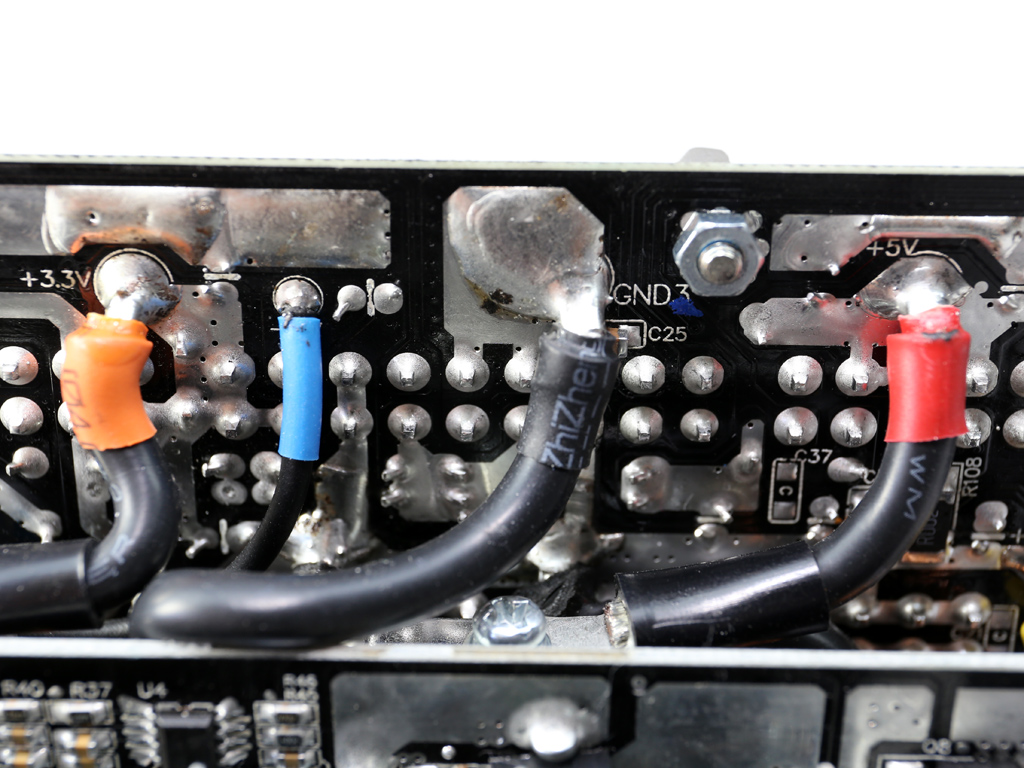Corsair HX1200 PSU Review
Why you can trust Tom's Hardware
Teardown & Component Analysis
Parts Description
Before proceeding with this page we strongly encourage you to a look at our PSUs 101 article, which provides valuable information about PSUs and their operation, allowing you to better understand the components we're about to discuss. Our main tools for disassembling PSUs are a Thermaltronics soldering and rework station and a Hakko FR-300 desoldering gun. Finally, for the identification of tiny parts we use an Andonstar HDMI digital microscope.
| General Data | |
|---|---|
| Manufacturer (OEM) | CWT |
| Platform Model | - |
| Primary Side | |
| Transient Filter | 6x Y caps, 2x X caps, 2x CM chokes, 1x MOV |
| Inrush Protection | NTC Thermistor & Relay |
| Bridge Rectifier(s) | 2x Vishay LVB2560 (600V, 25A @ 105°C) |
| APFC MOSFETs | 2x Vishay SIHG33N60E (650V, 21A @ 100°C, 0.099Ω) |
| APFC Boost Diode | 1x CREE C3D10060A (600V, 10A @ 153°C) |
| Hold-up Cap(s) | 1x Chemi-Con (400V, 680uF, 2000h @ 105°C, KMZ) 1x Chemi-Con (400V, 560uF, 2000h @ 105°C, KMR) |
| Main Switchers | 4x Fairchild FCPF190N65F (650V, 13.1A @ 100°C, 0.19Ω) |
| APFC Controller | Texas Instruments UCC28070 & CM03X |
| LLC Resonant Controller | Champion CM6901 |
| Topology | Primary side: Full-Bridge & LLC Resonant Controller Secondary side: Synchronous Rectification & DC-DC converters |
| Secondary Side | |
| +12V MOSFETs | 12x Infineon BSC016N06NS (60V, 100A @ 100°C, 1.6mΩ) |
| 5V & 3.3V | DC-DC Converters: 7x Ubiq QM3006D (30V, 57A @ 100°C, 5.5mΩ) PWM Controller: 1x APW7159C |
| Filtering Capacitors | Electrolytics: Nippon Chemi-Con (1-5,000 @ 105°C, KZE), Nippon Chemi-Con (4-10,000 @ 105°C, KY) Polymers: Nippon Chemi-Con, FPCAP |
| Supervisor IC | 2x Weltrend WT7518 (OCP, PG, SCP) |
| Fan Model | NR135P (135mm, 12V, 0.22A, Fluid Dynamic Bearing) |
| Fan Controller | Microchip PIC16F1503 |
| 5VSB Circuit | |
| Rectifier | 1x PFR20V45 SBR (45V, 2x 10A) & M03N65D FET (switcher) |
| Standby PWM Controller | On-Bright OB5269CP |
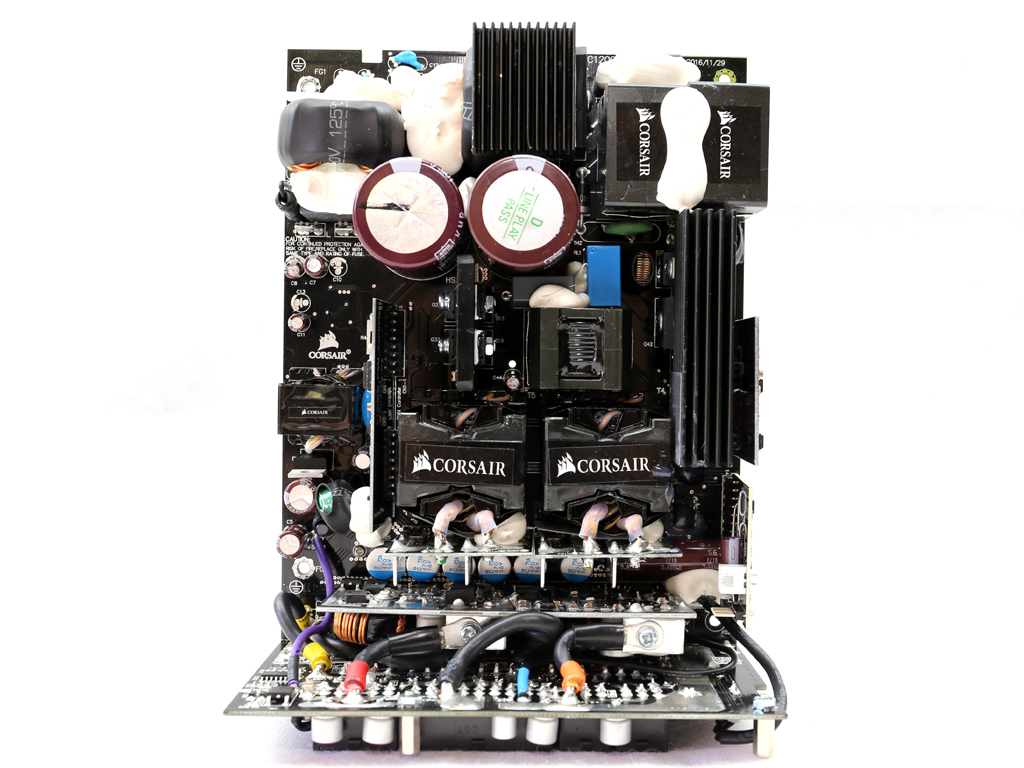
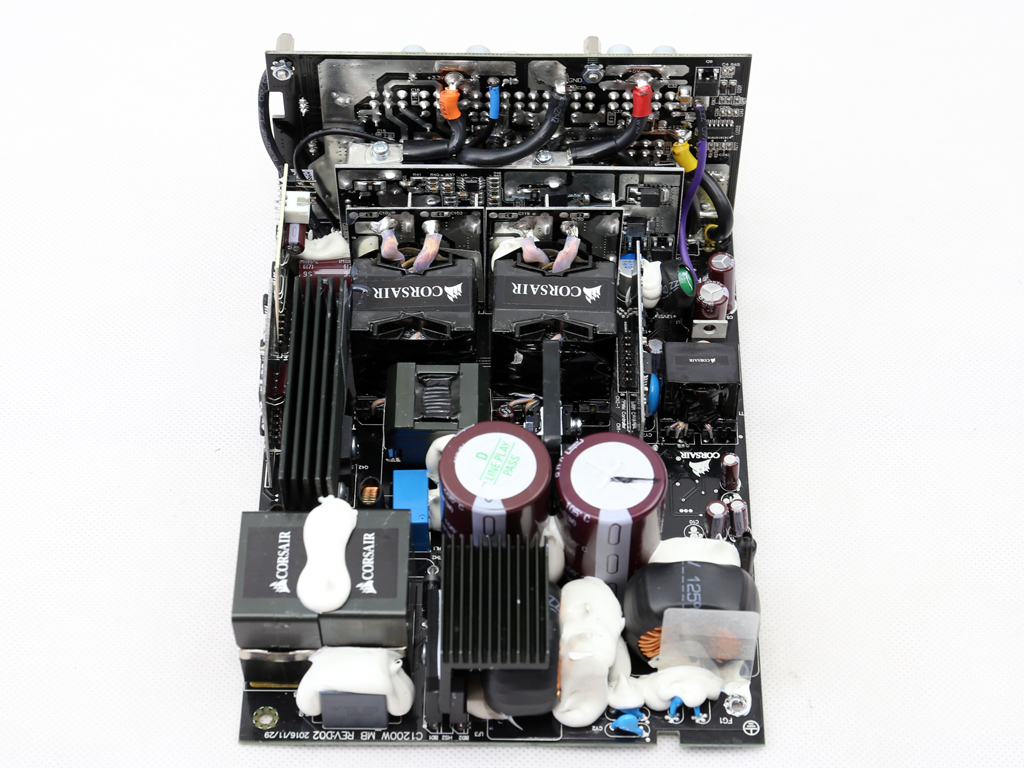
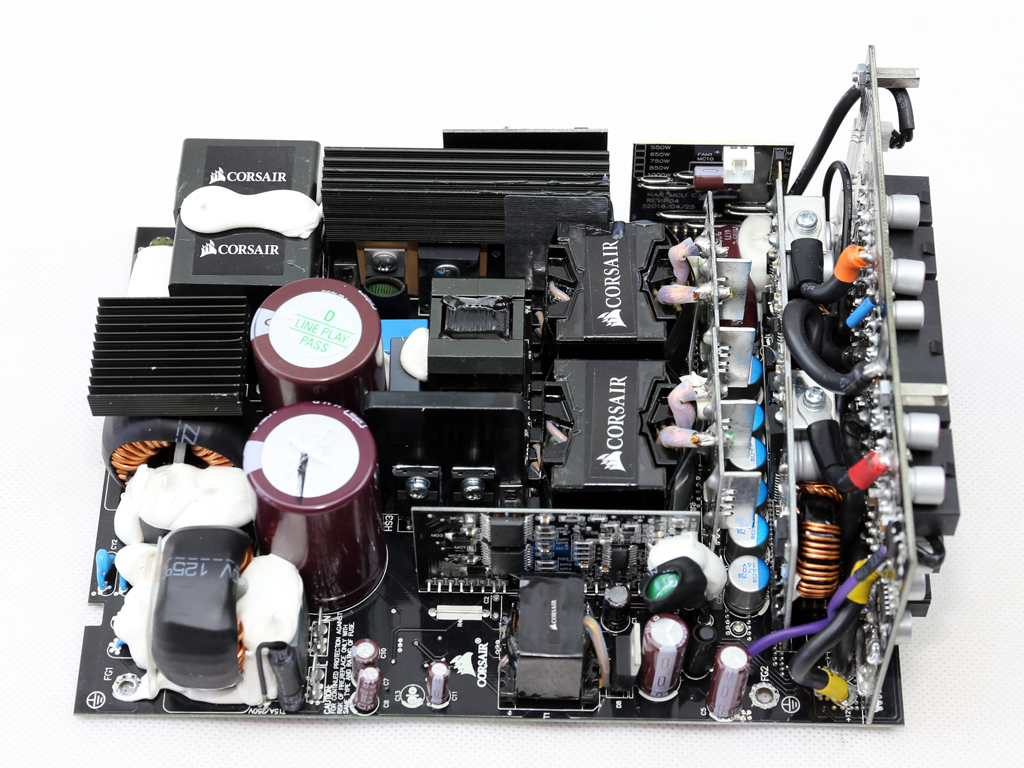
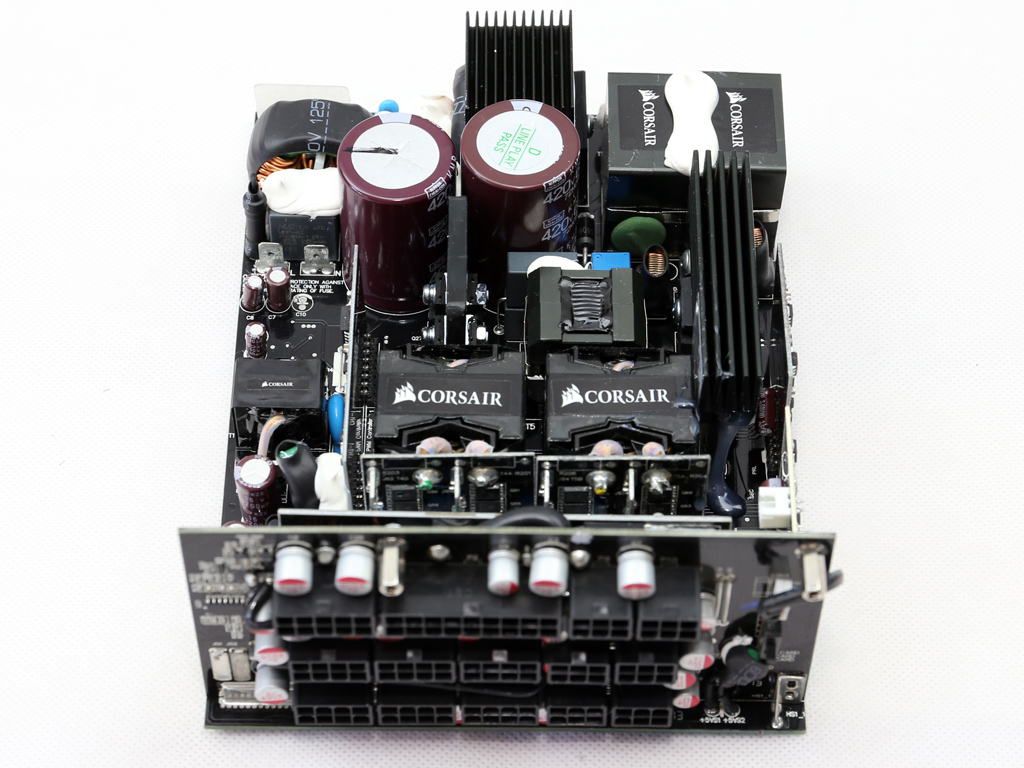

CWT makes all of Corsair's HXi and HX power supplies, so it's no surprise that the HX1200's platform shares many similarities with the HX1200i. The major difference, of course, is the lack of a digital interface circuit. A half-bridge topology and an LLC resonant converter are utilized on the primary side, while FETs generate the +12V rail on the secondary side. Two DC-DC converters on the secondary side are used for generating the minor rails.
Interestingly, the primary side's heat sinks are pretty small for a 1.2kW PSU, and there are no actual heat sinks on the secondary side.
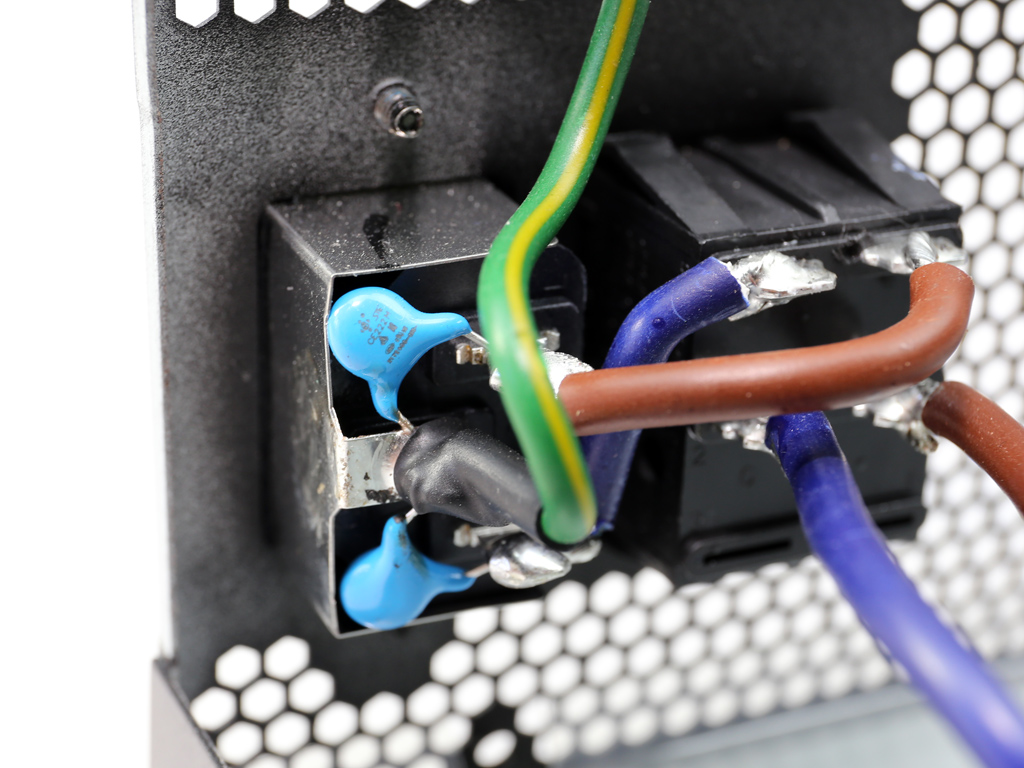

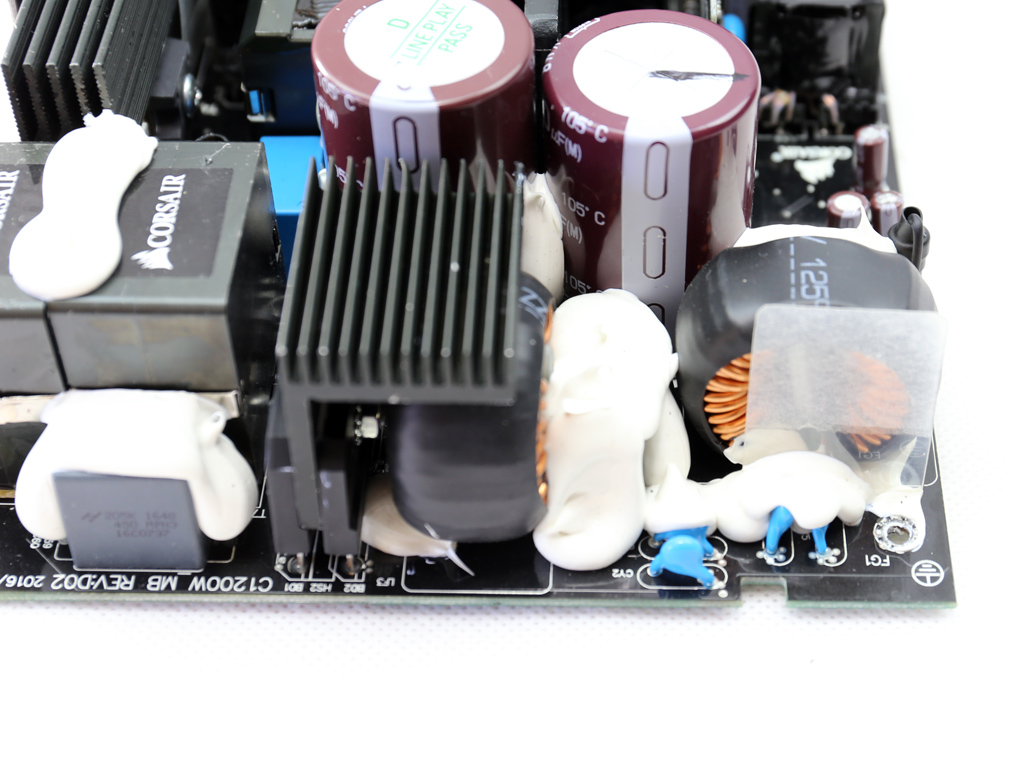
The AC receptacle hosts the first part of the transient filter, which includes two Y caps. The filter's other parts are on the main PCB and consist of four Y and two X caps, two CM chokes, and an MOV.
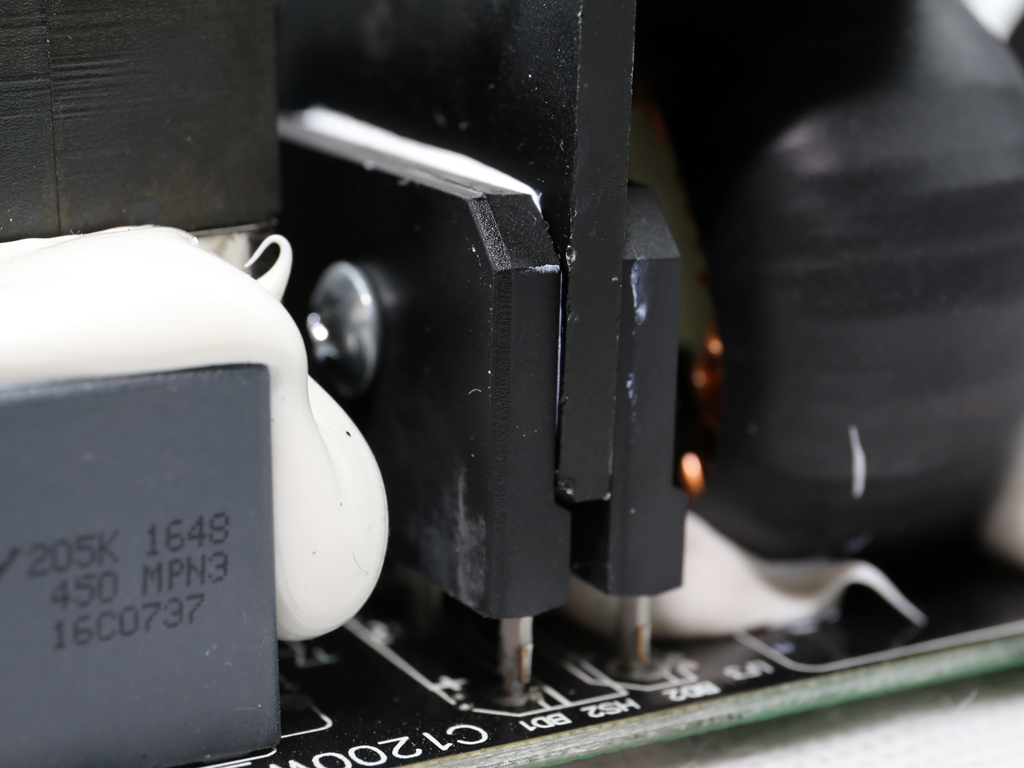
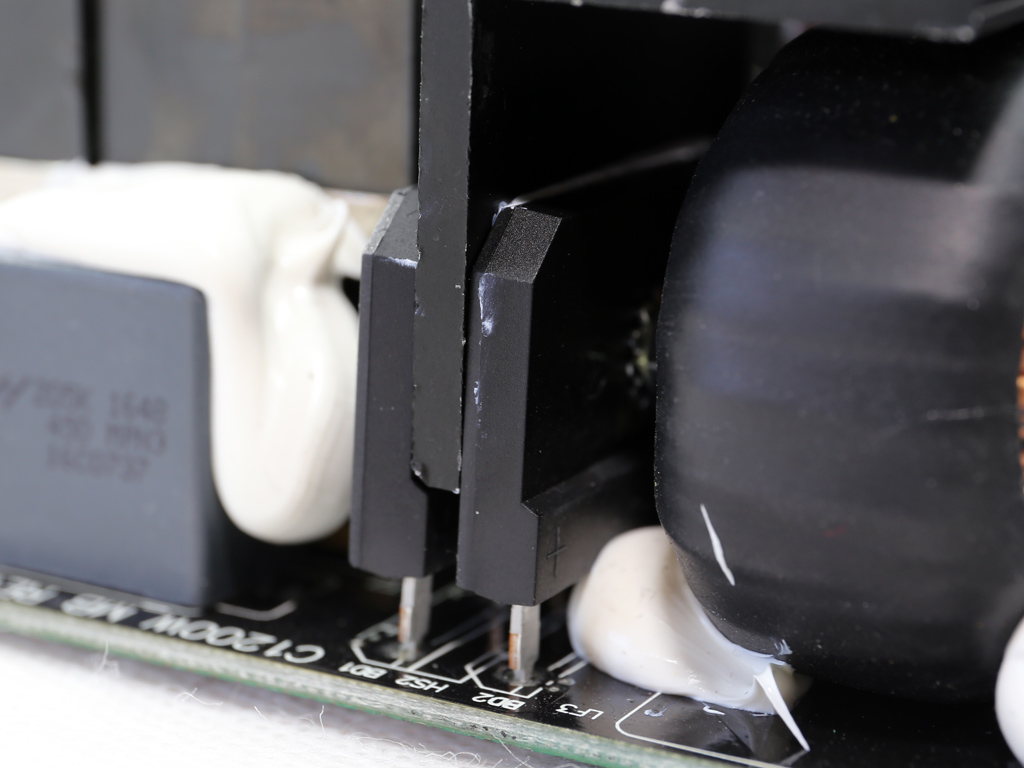
The bridge rectifiers are able to handle up to 50A of current combined. Two Vishay LVB2560 bridges are used, and they are cooled by a dedicated heat sink.
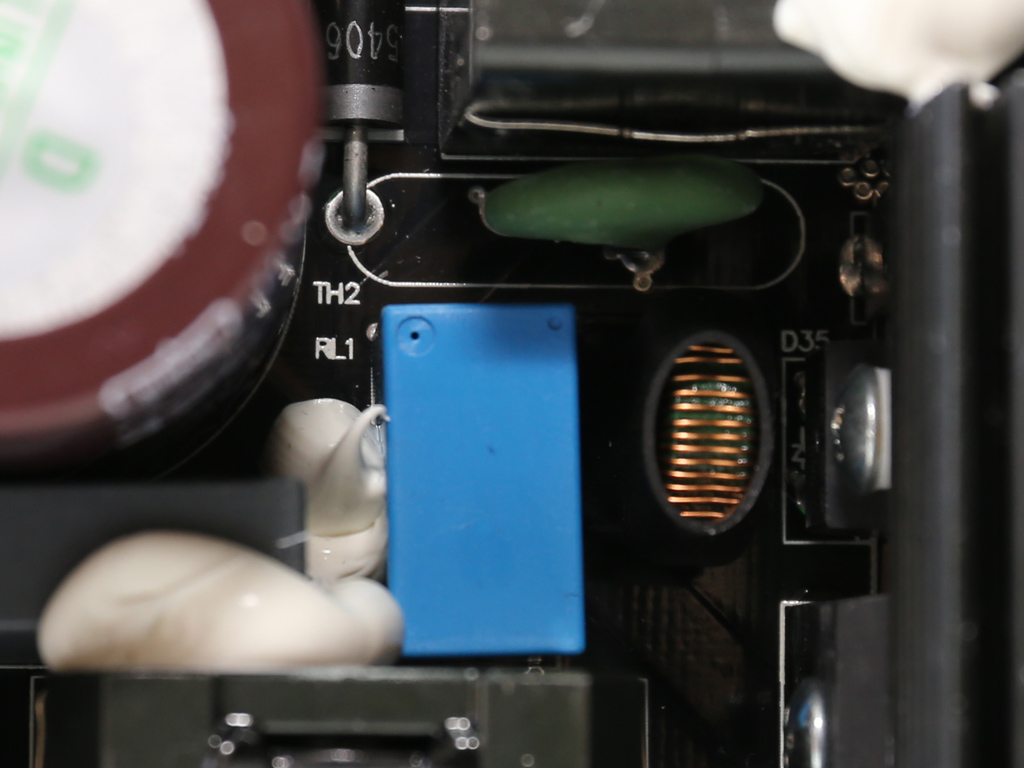
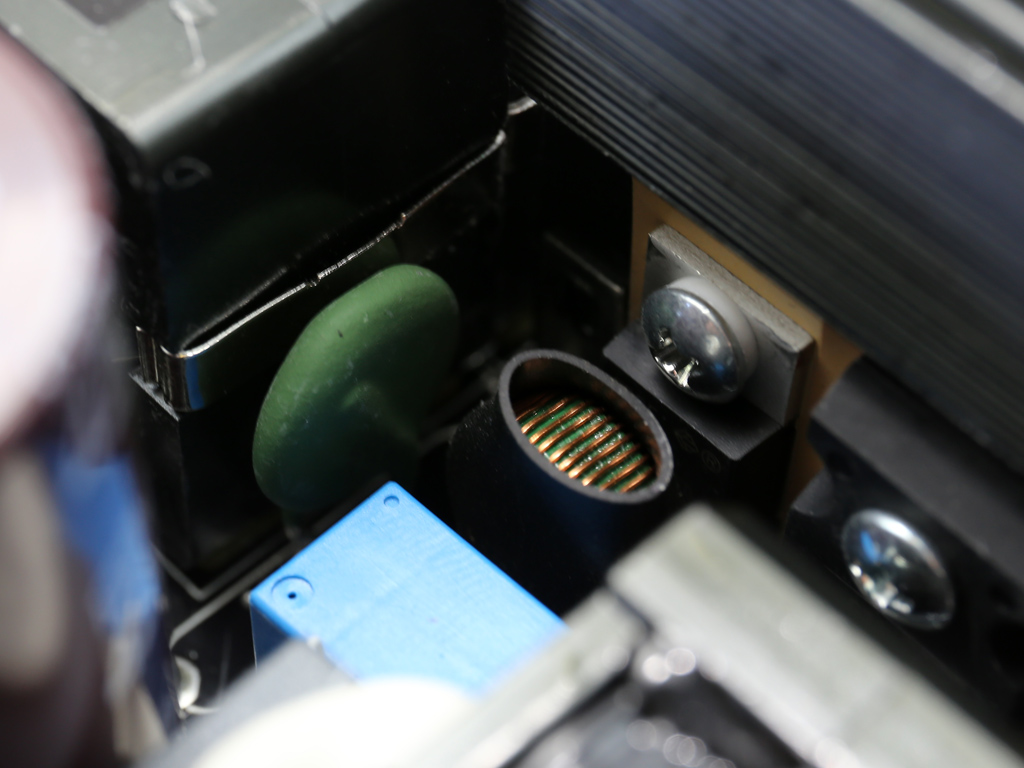
There is an NTC thermistor for inrush current protection, and it's backed up by a bypass relay.
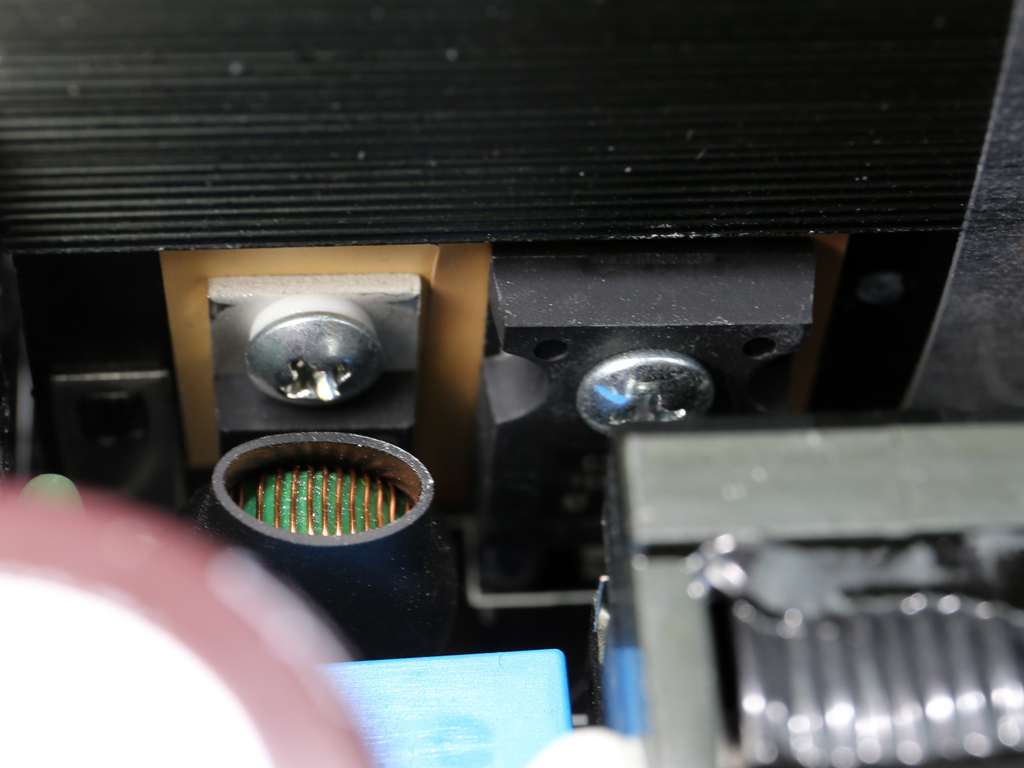
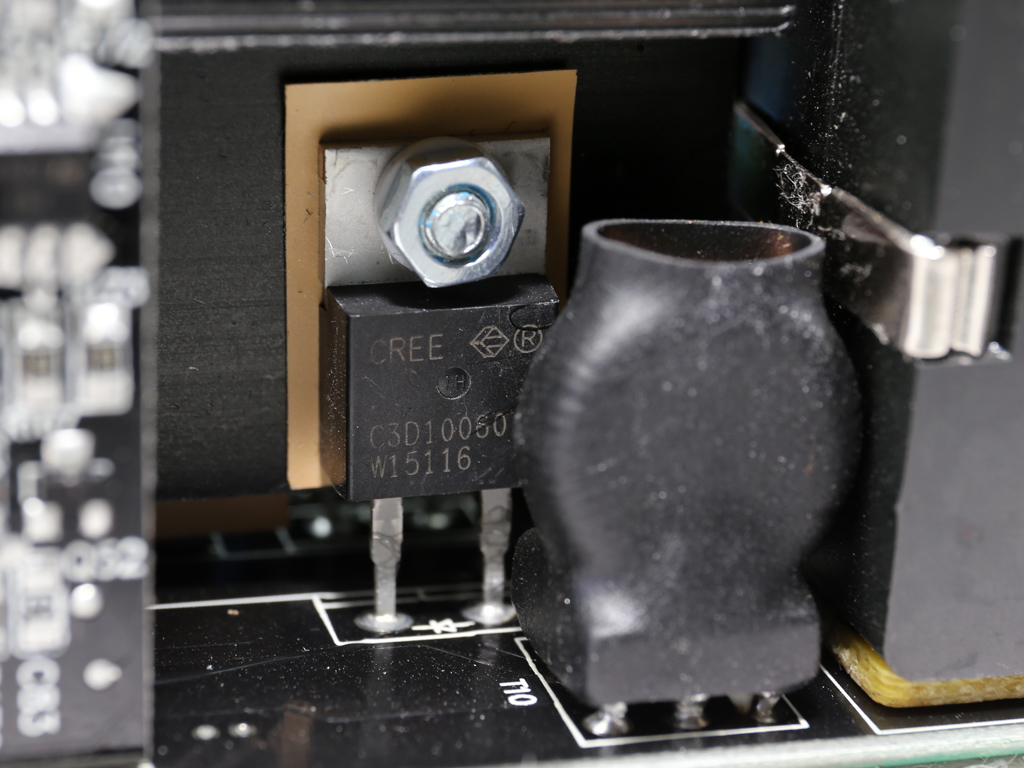
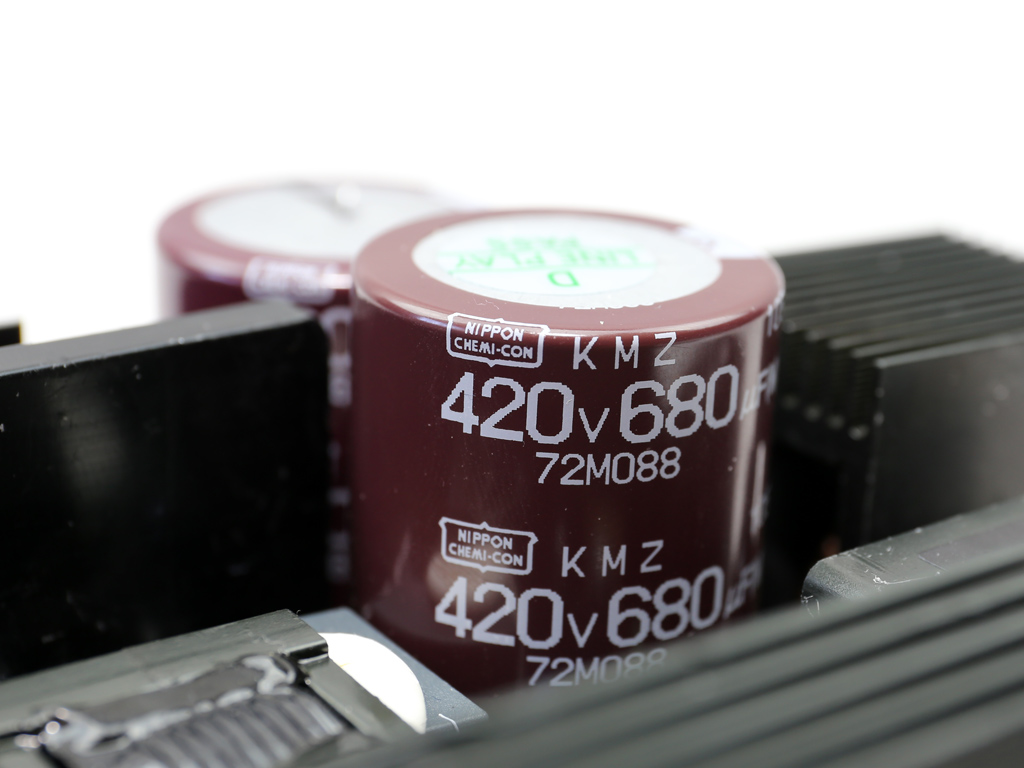
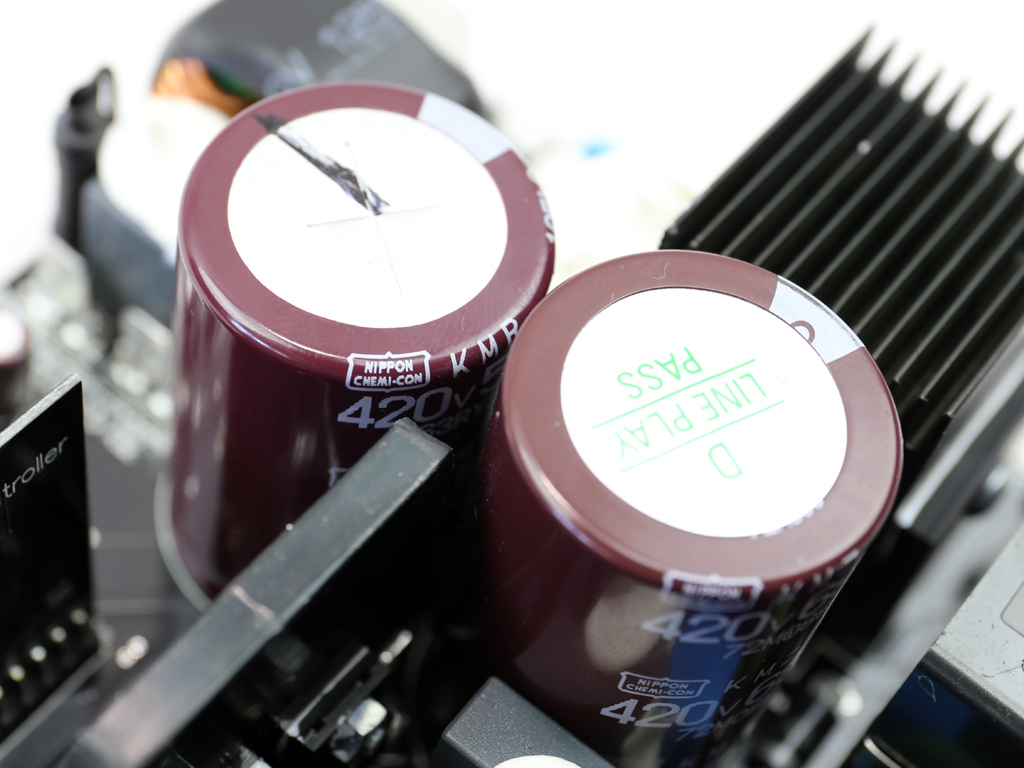
The HX1200 employs an interleaved PFC converter, meaning that two APFC converters work in parallel with a phase difference among them. This minimizes input/output current ripple and lowers conduction losses, which increases efficiency and doubles the effective switching frequency. In total, two Vishay SIHG33N60E FETs are used by both APFC converters, along with a couple of CREE C3D10060A boost diodes. There are also two bulk caps with different capacities (680uF and 560uF, so 1240uF combined). Both bulk caps are provided by Chemi-Con and are of high quality.
Get Tom's Hardware's best news and in-depth reviews, straight to your inbox.
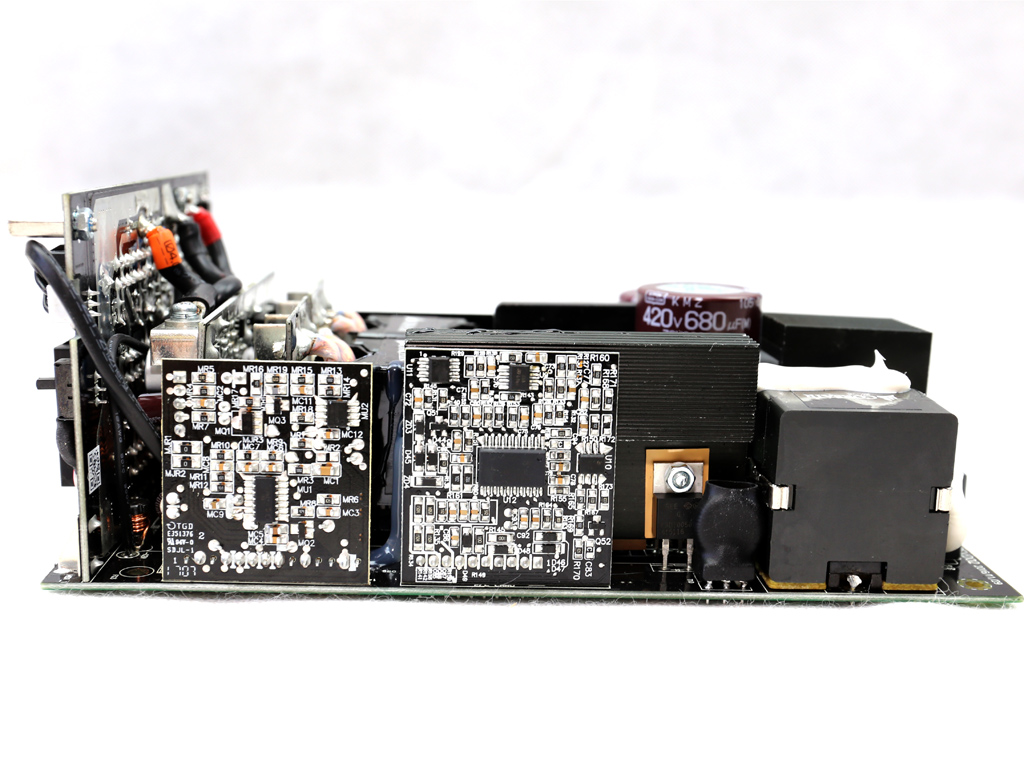
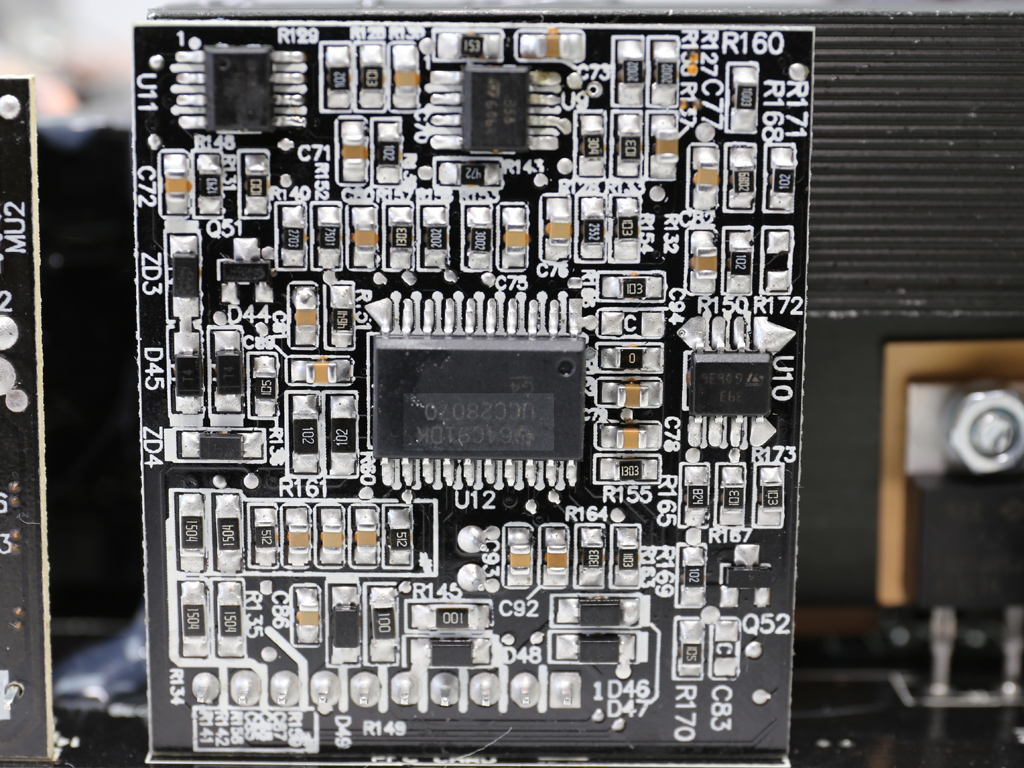
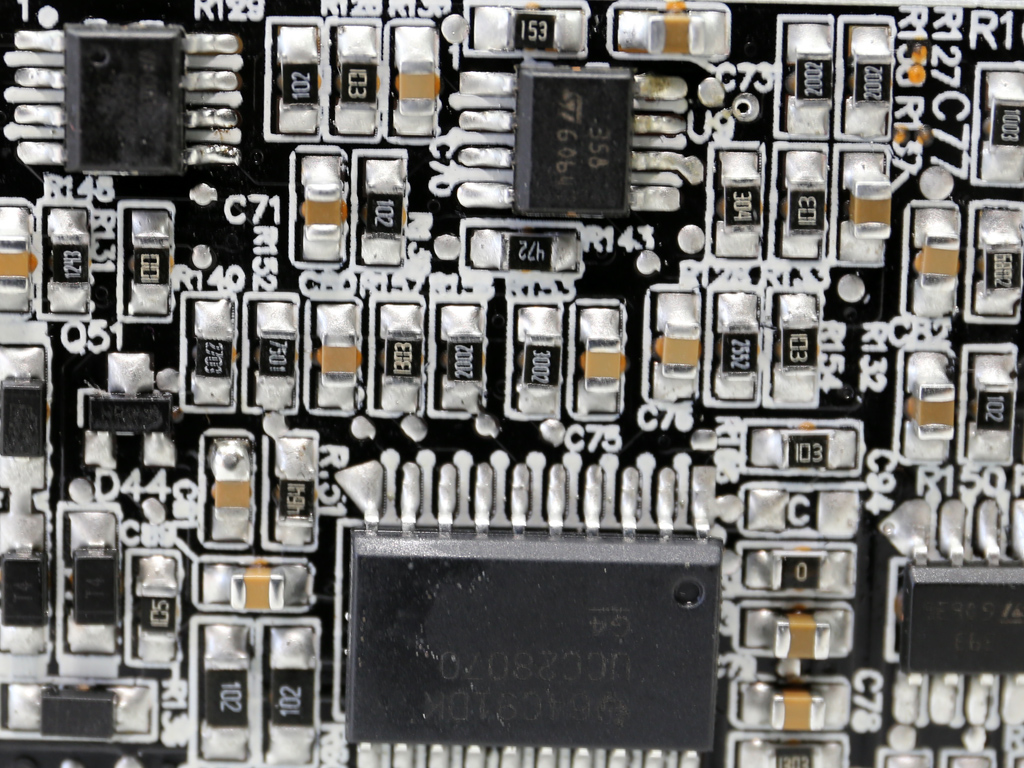
The APFC controller is a Texas Instruments UCC28070 which is supported by a CM03X PFC controller that's responsible for low power consumption in standby. Both ICs are hosted on a small daughterboard.
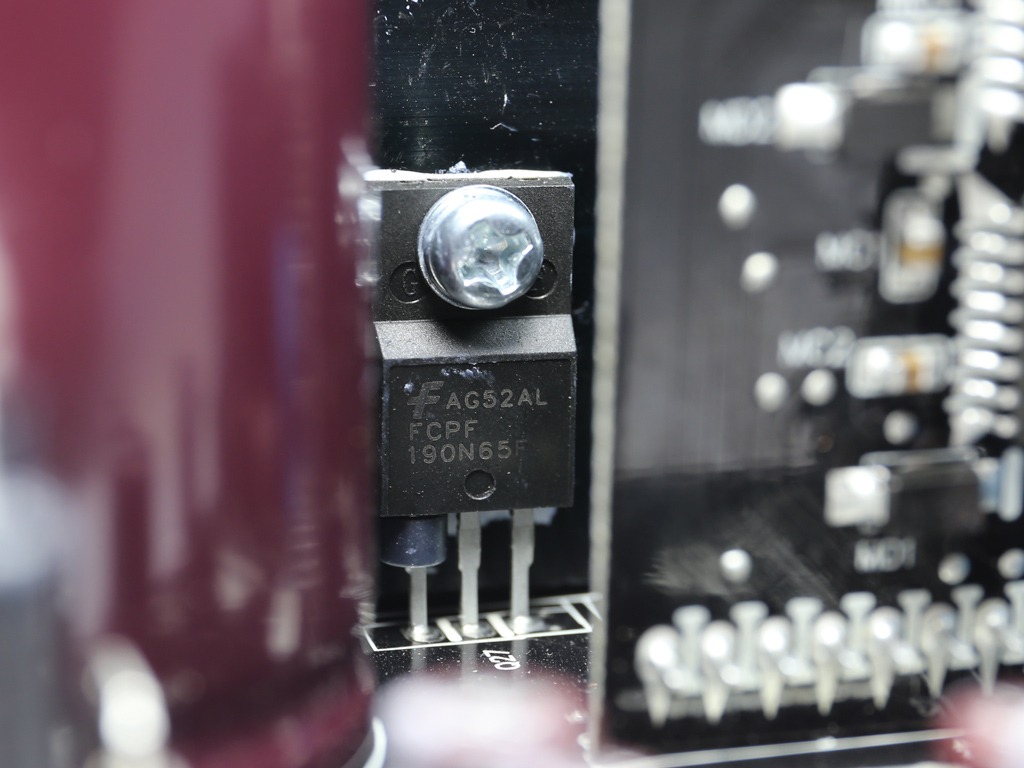
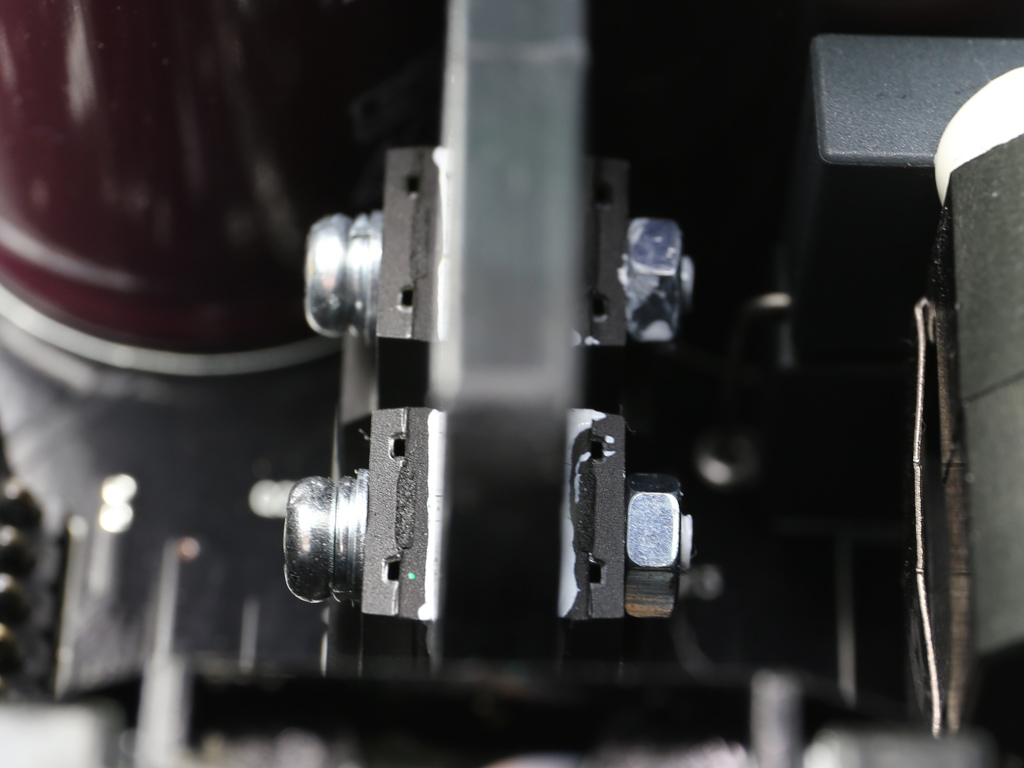
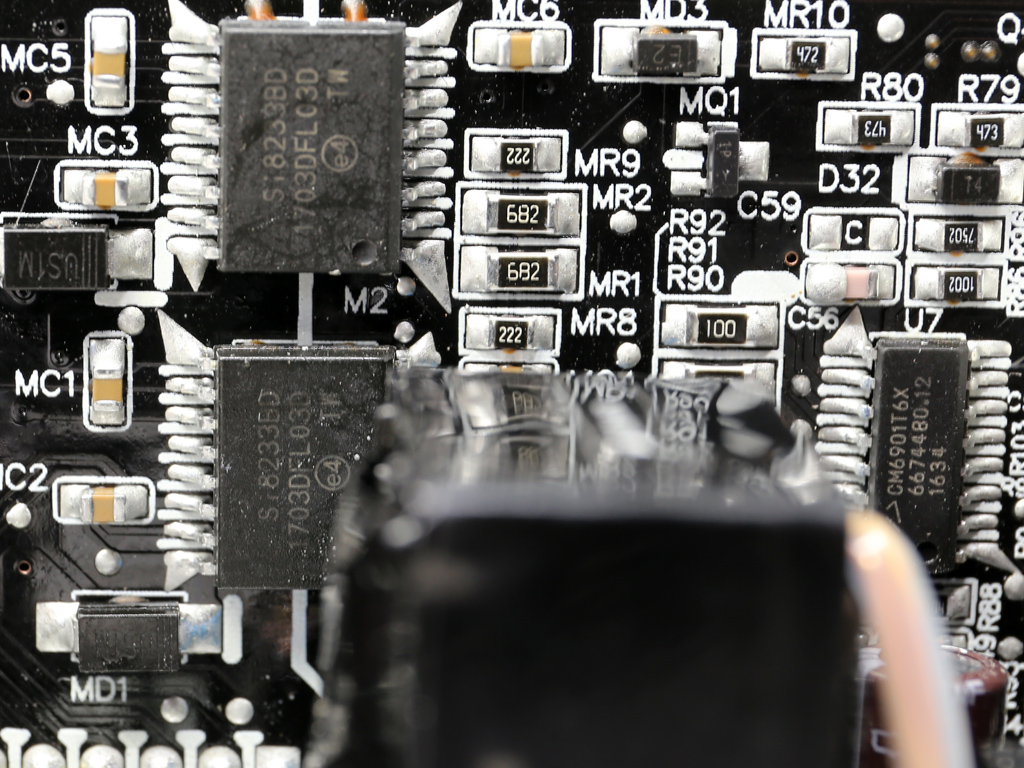
Four Fairchild FCPF190N65Fs are the primary switching FETs, configured in a full bridge topology. Those FETs are also supported by an LLC resonant converter for lower switching loss. The LLC resonant controller is the omnipresent Champion CM6901 IC.
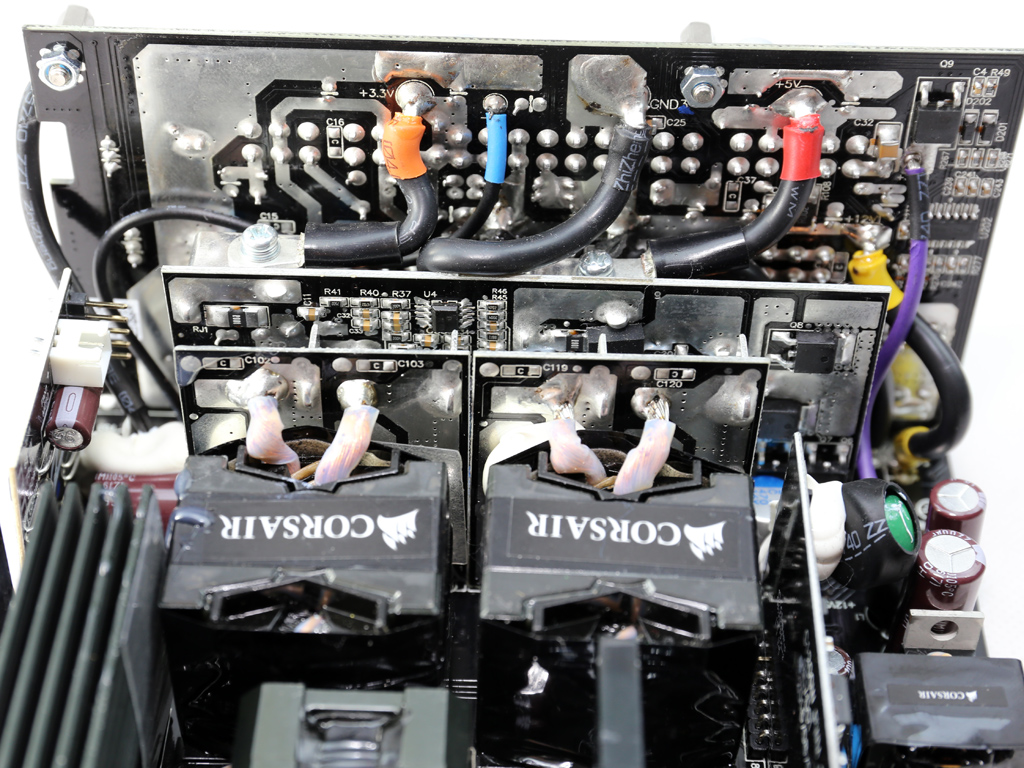
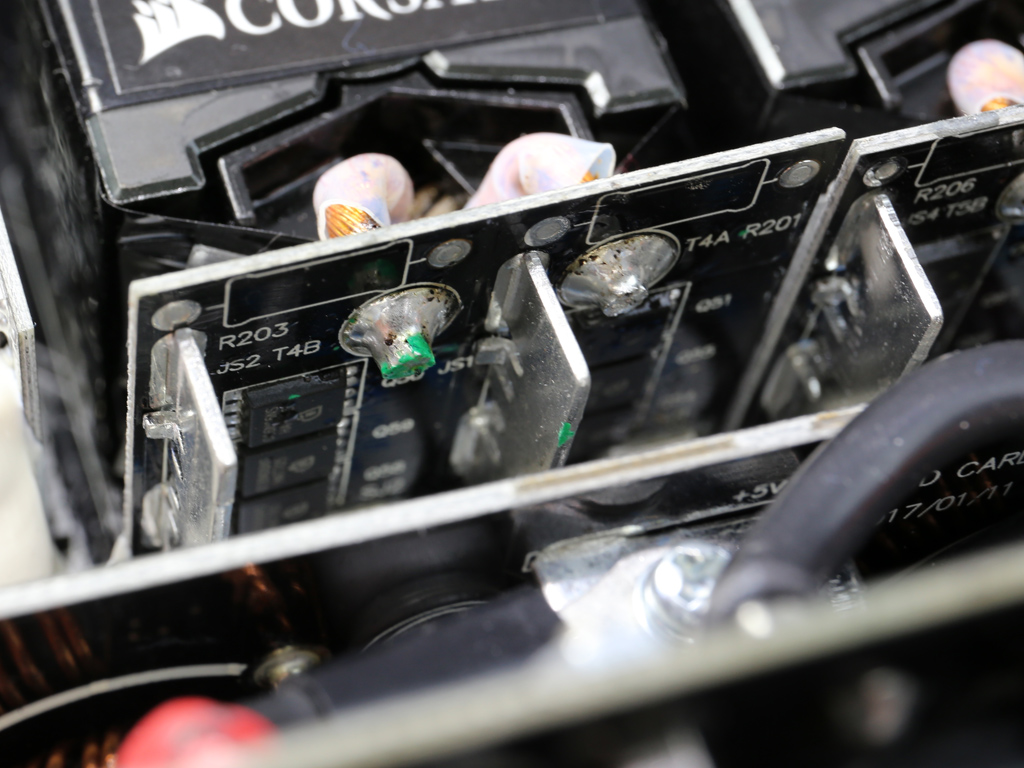
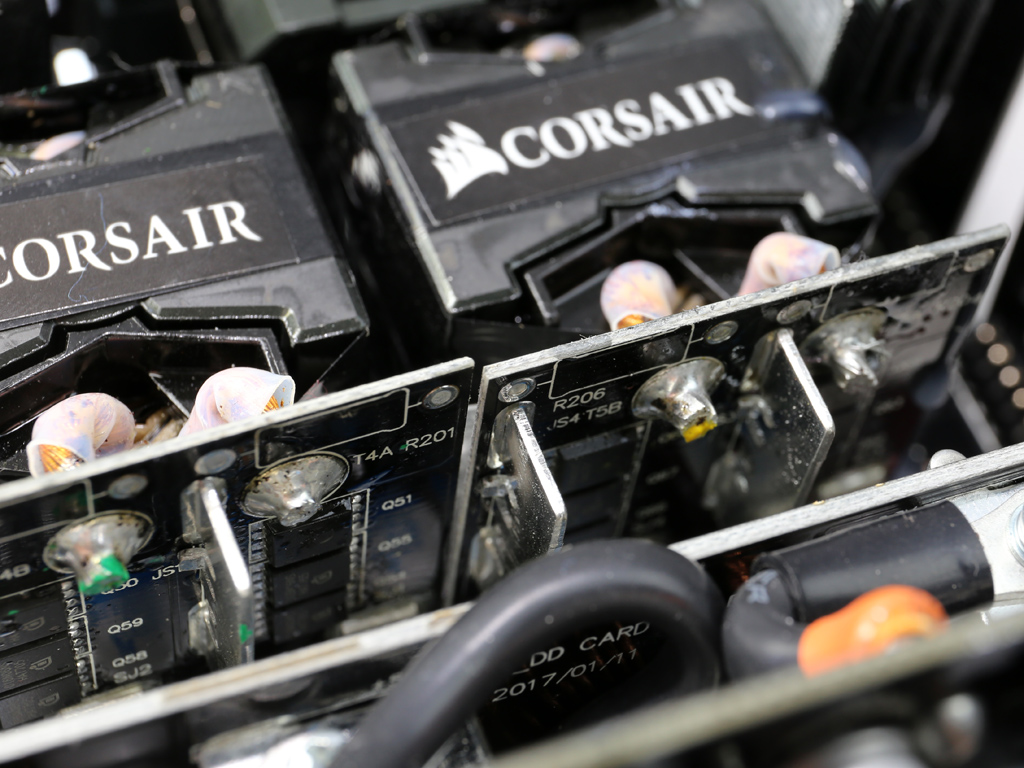
Two parallel transformers form a bridge between the primary and secondary sides. Right in front of them is a PCB that hosts all FETs tasked with regulating the +12V rail, 12 Infineon BSC016N06NS. As usual for a CWT platform, there are no heat sinks on the secondary side. The +12V FETs are cooled by a number of bus bars, along with the fan's airflow (at least when it's spinning, since this PSU features a long-lasting passive mode.
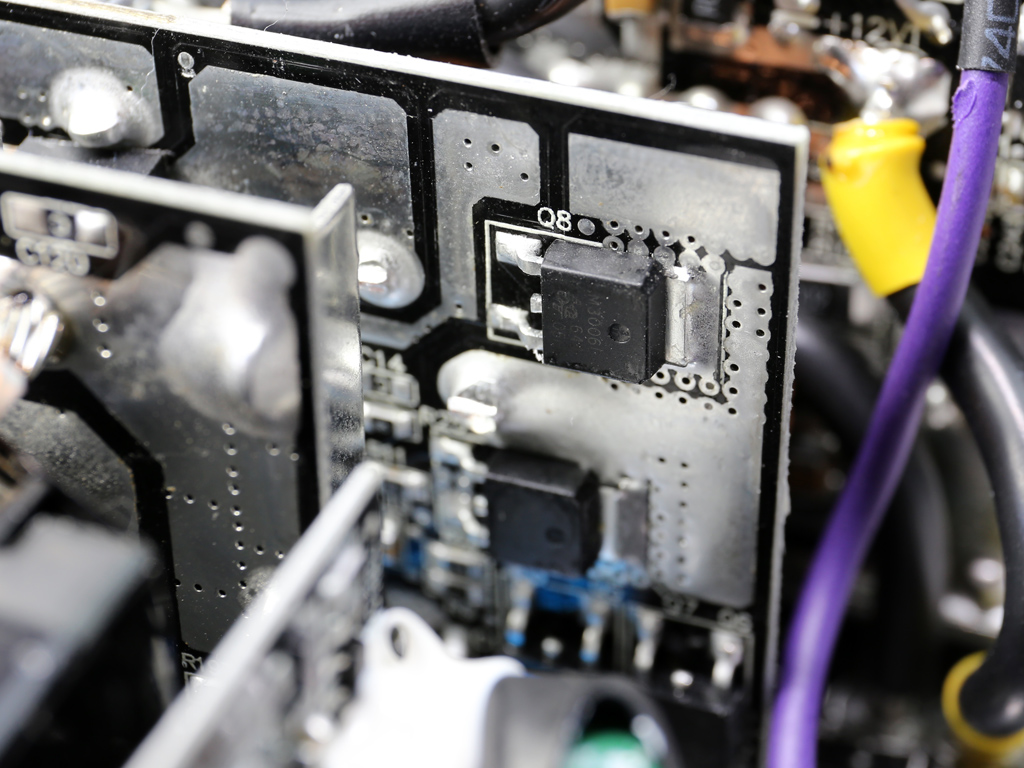
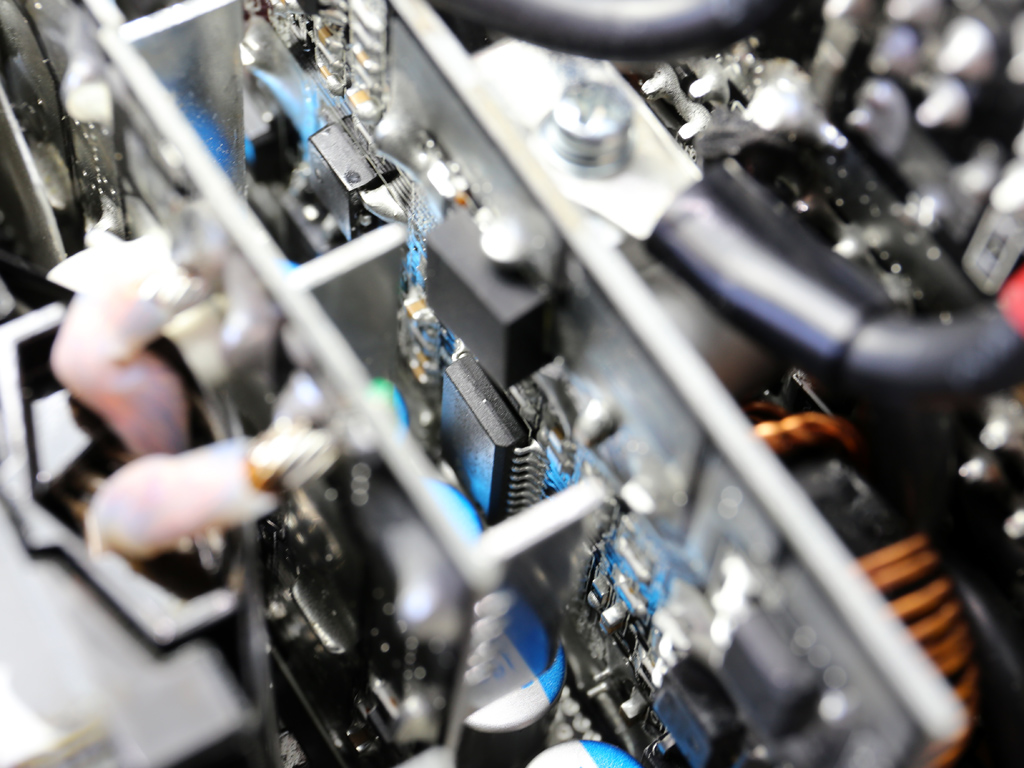
Right in front of the +12V regulation board is another PCA hosting the voltage regulation modules that generate the minor rails. The common PWM controller is an Anpec APW7159C IC, while in total seven Ubiq QM3006Ds are used.

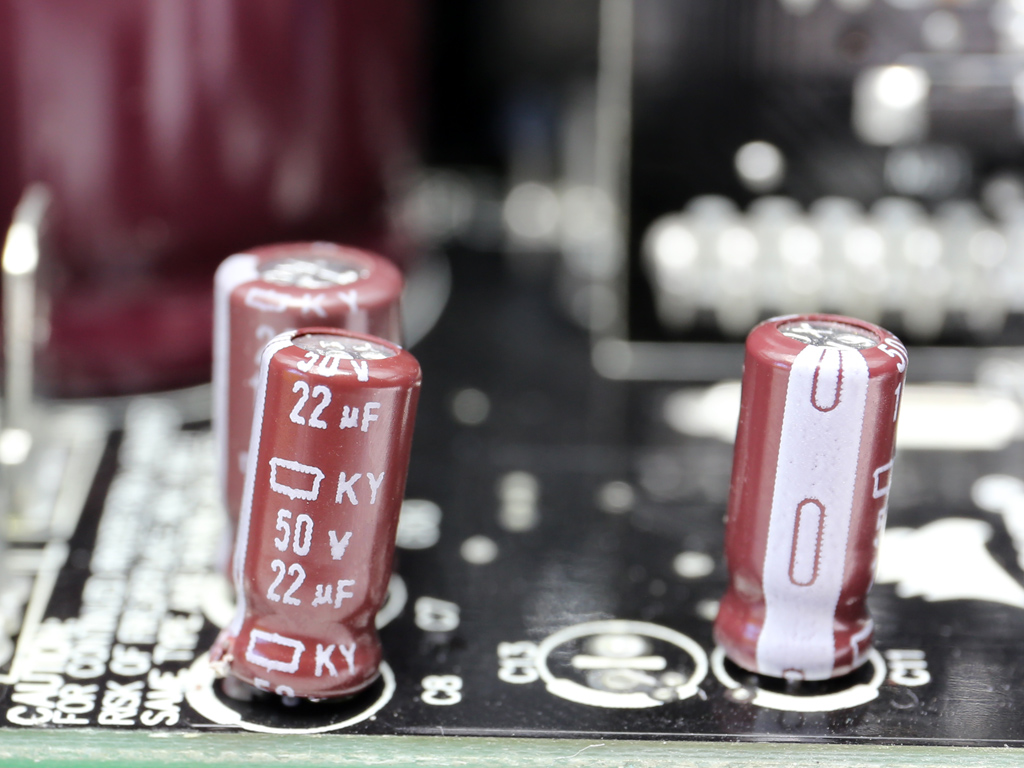
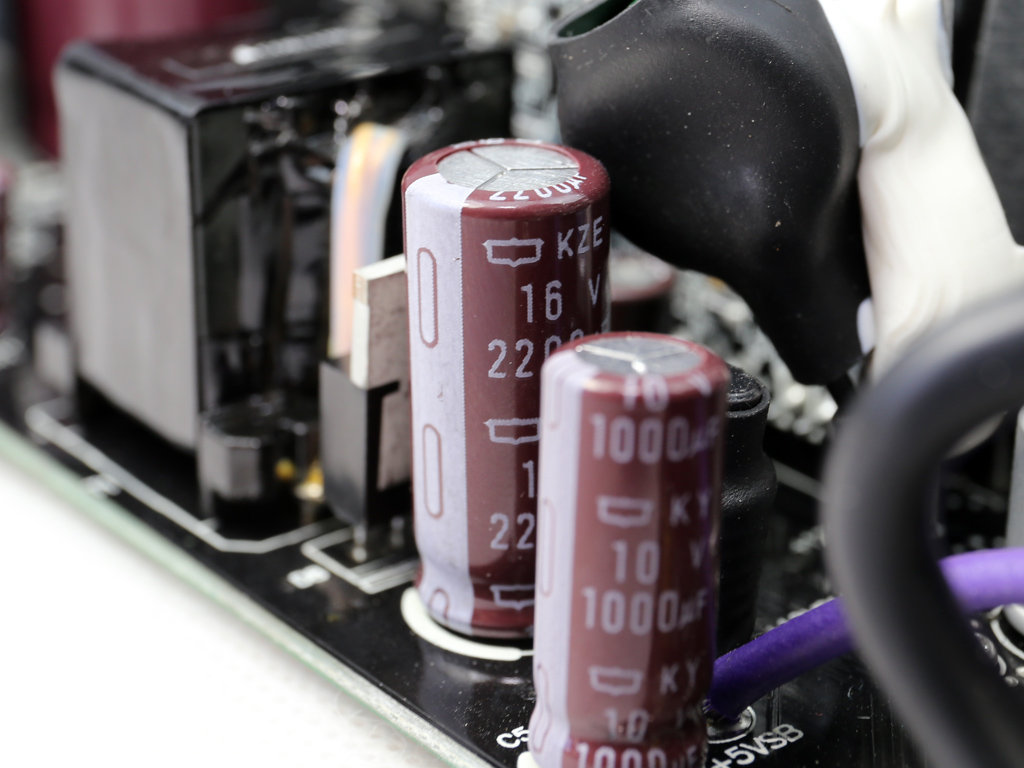
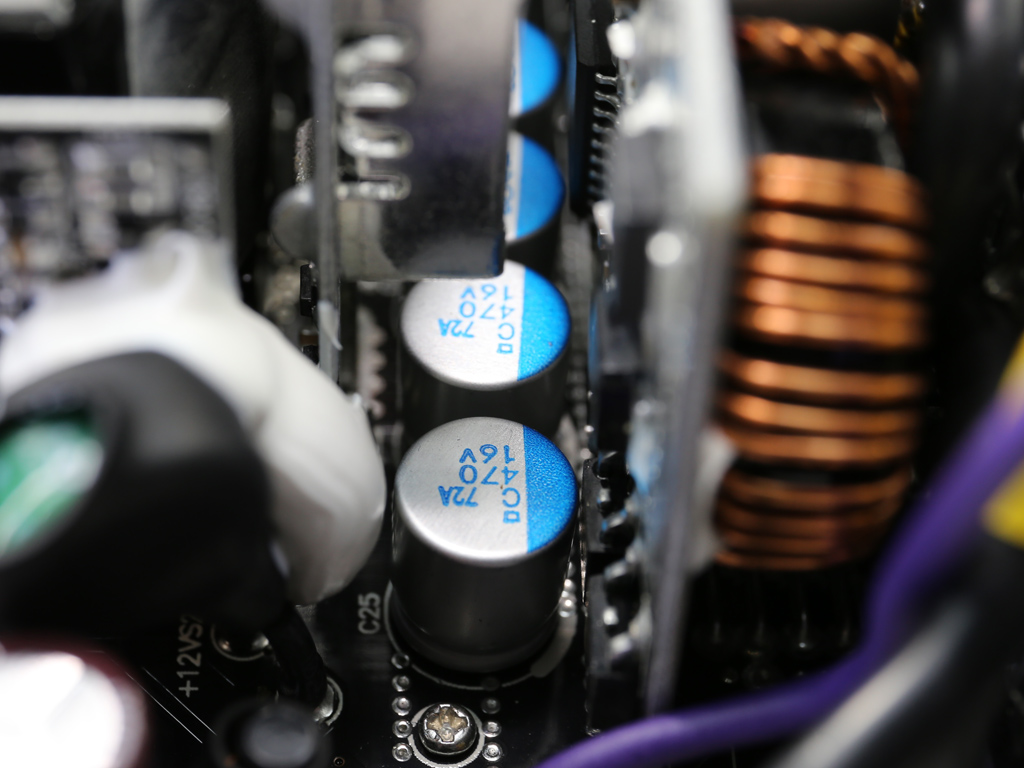
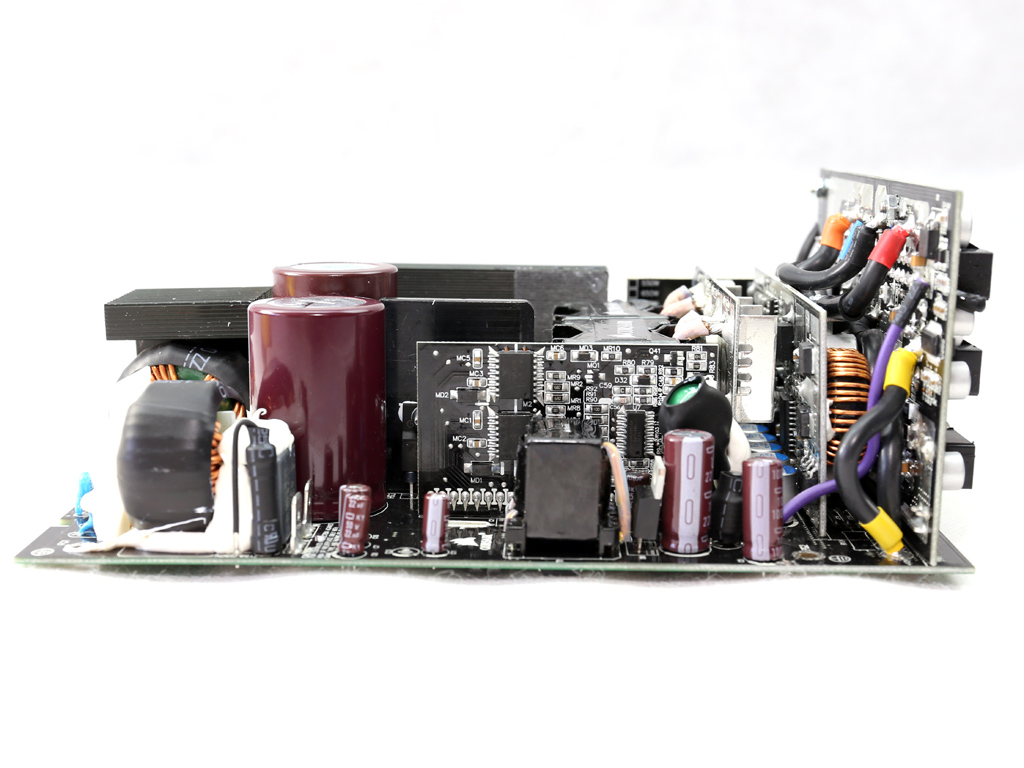
The electrolytic filtering caps are provided by Chemi-Con, and they belong to the KZE and KY lines. Most of the filtering caps are polymers, though; on the main PCB we only find Chemi-Con polymer caps.
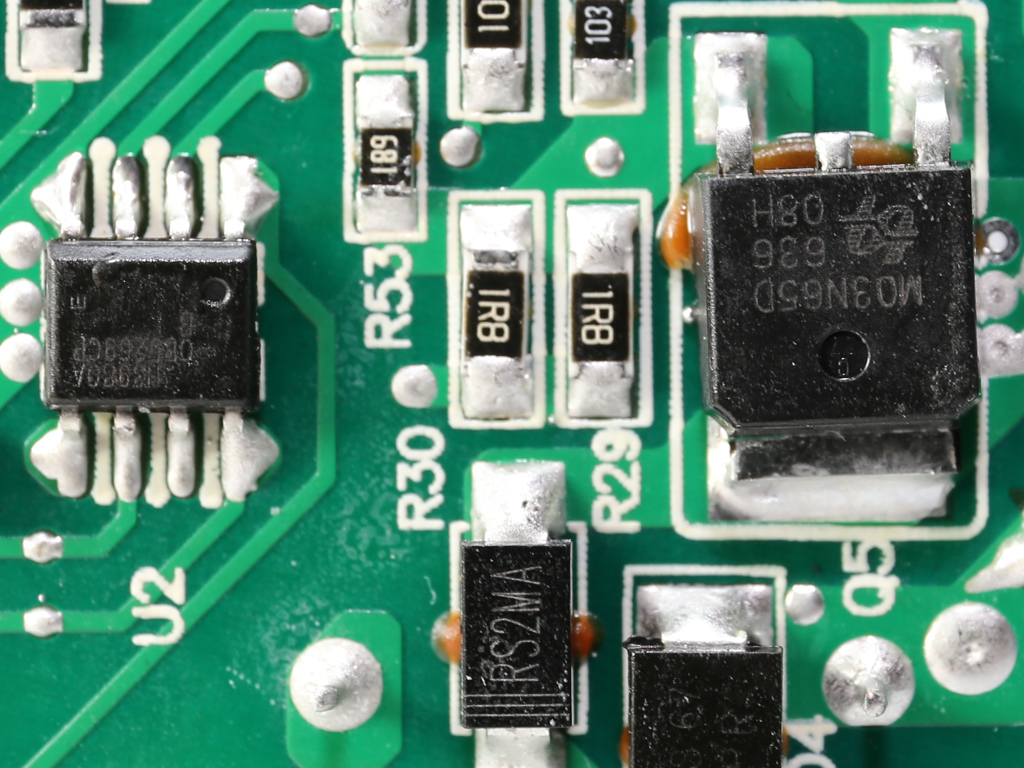
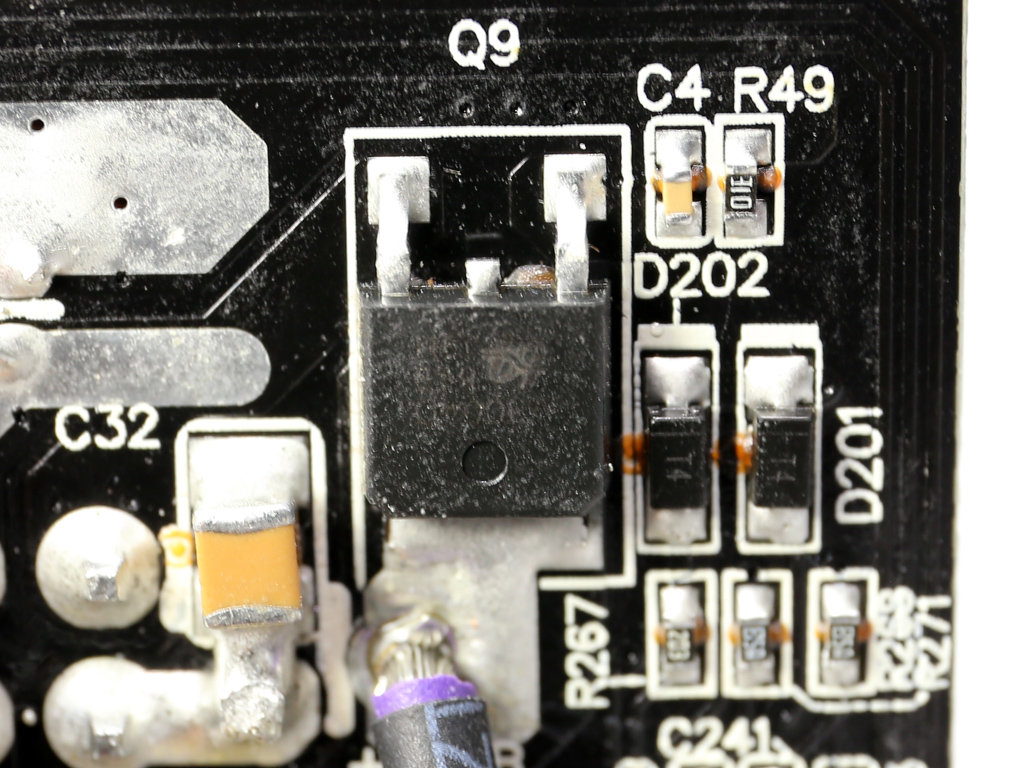
The 5VSB rail is regulated by a combination of a M03N65D FET and a PFR20V45 SBR. The standby PWM controller is installed on the main PCB (it's an On-Bright OB5269CP IC). There is another FET on the back of the modular PCB, which is most likely part of the 5VSB circuit.
On the rear side of the modular PCB, three thick cables transfer the minor rails, along with earth, to the sockets. A smaller one transfers the 5VSB rail while another one is used for the -12V rail.
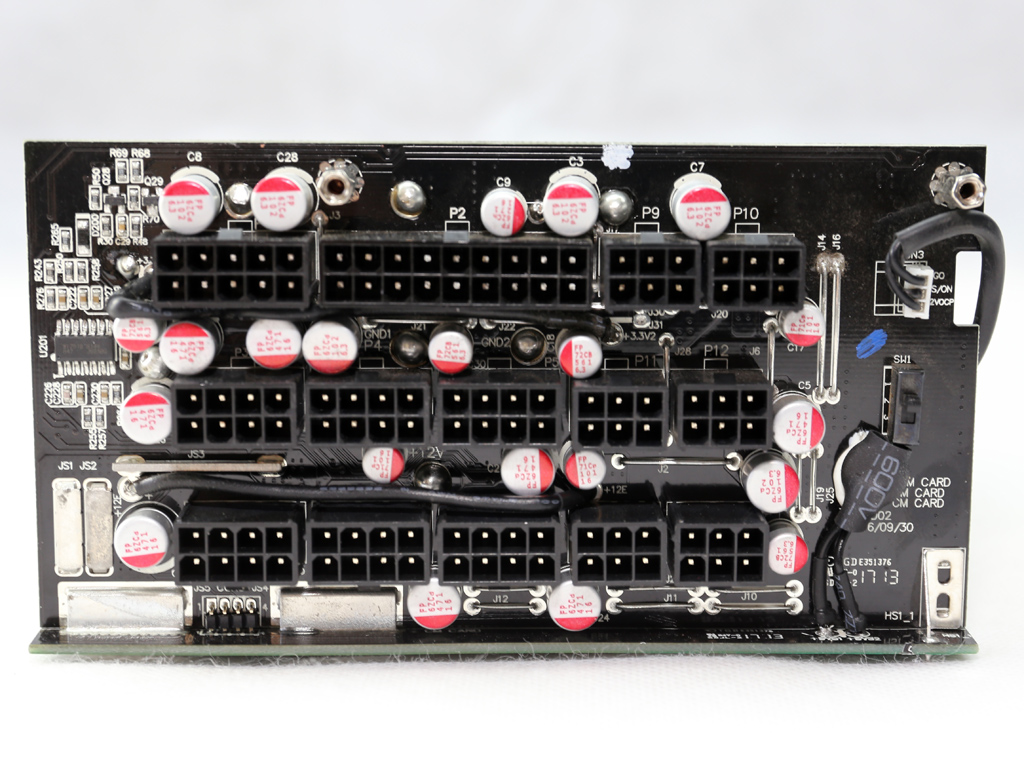
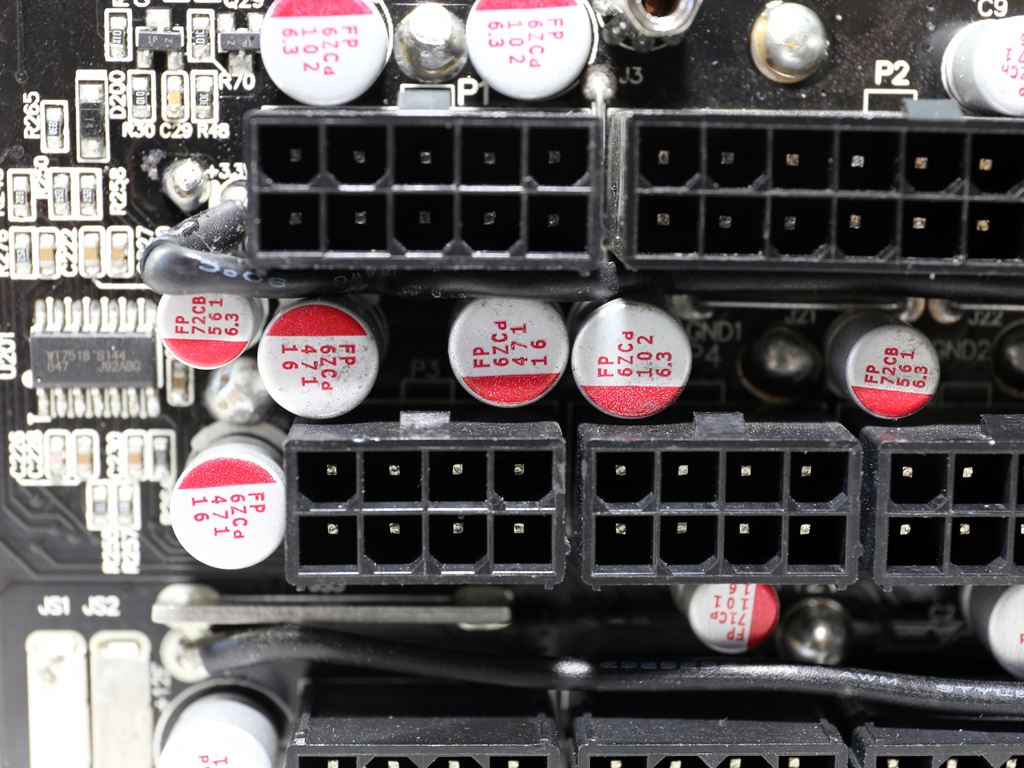
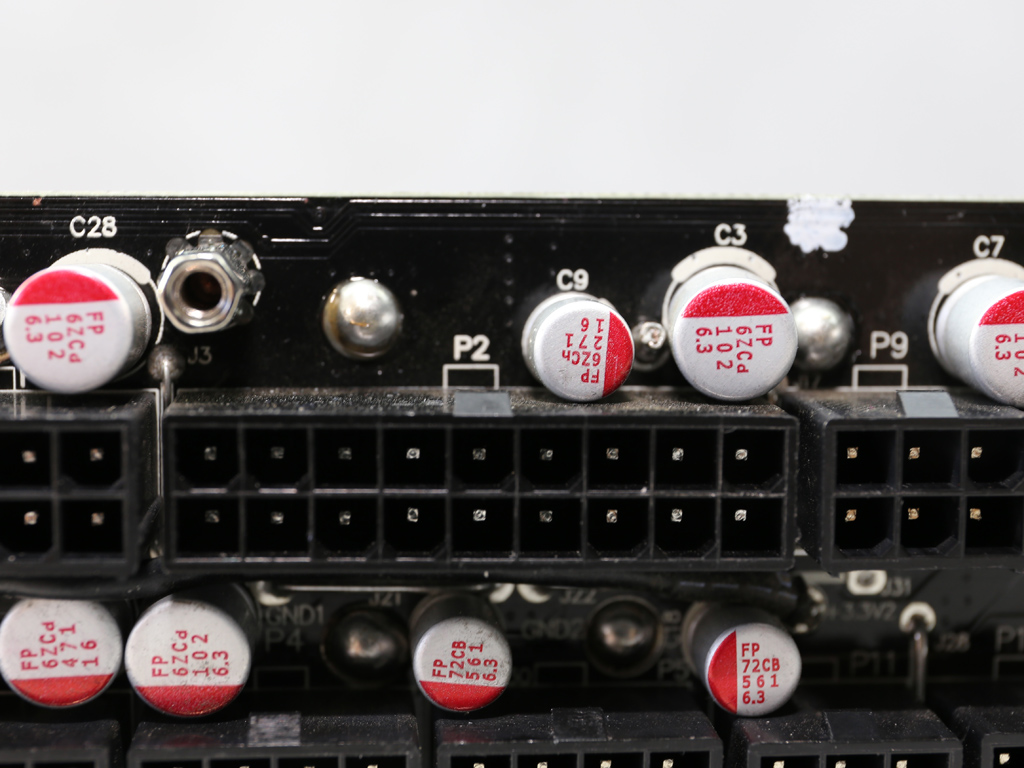
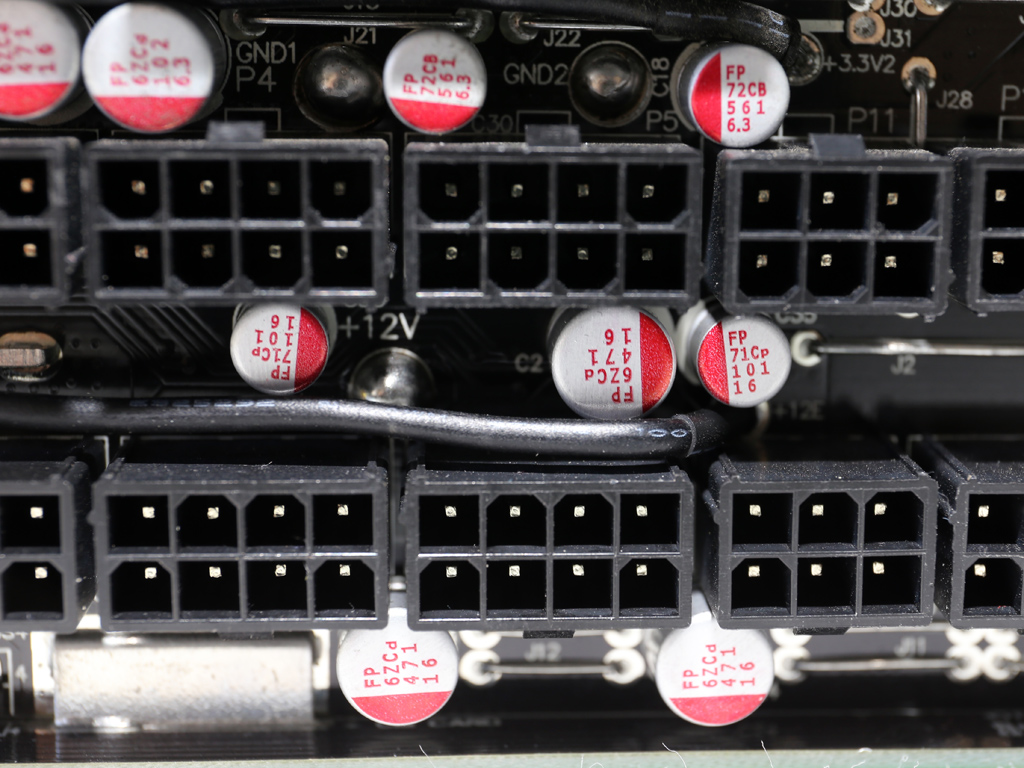

A large number of FPCAP polymer caps are installed on the front side of the modular board.
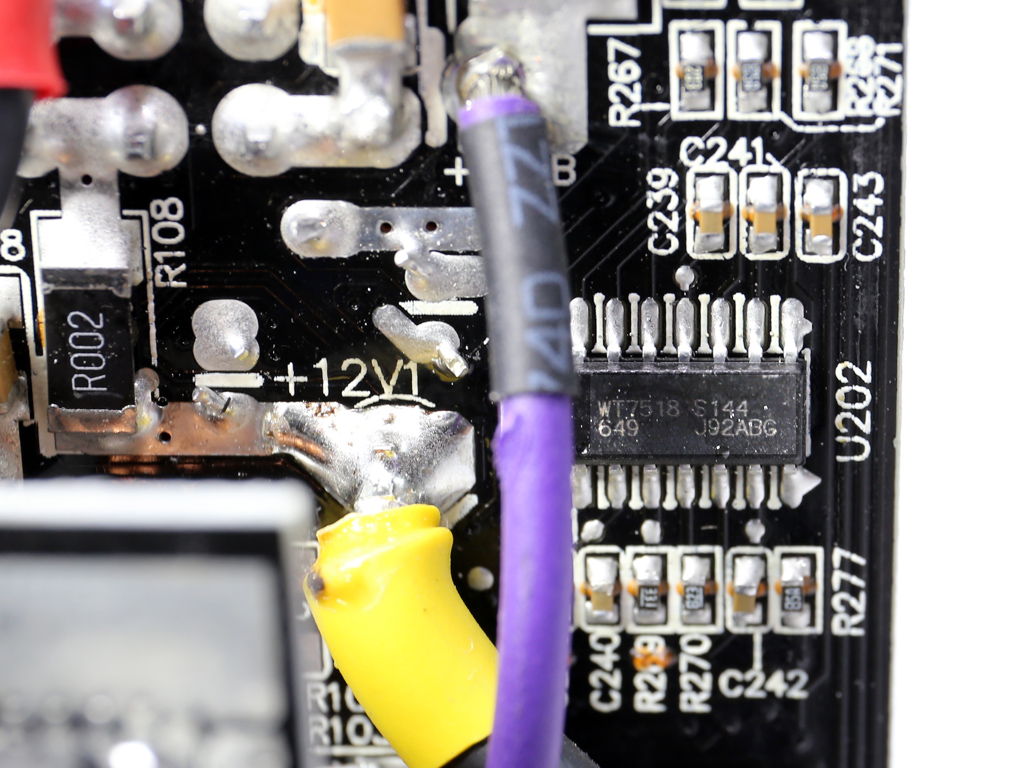

Two Weltrend WT7518s, plus a number of LM393 voltage comparators, handle the PSU's protection features. Both WT7518 ICs are installed on the modular board.
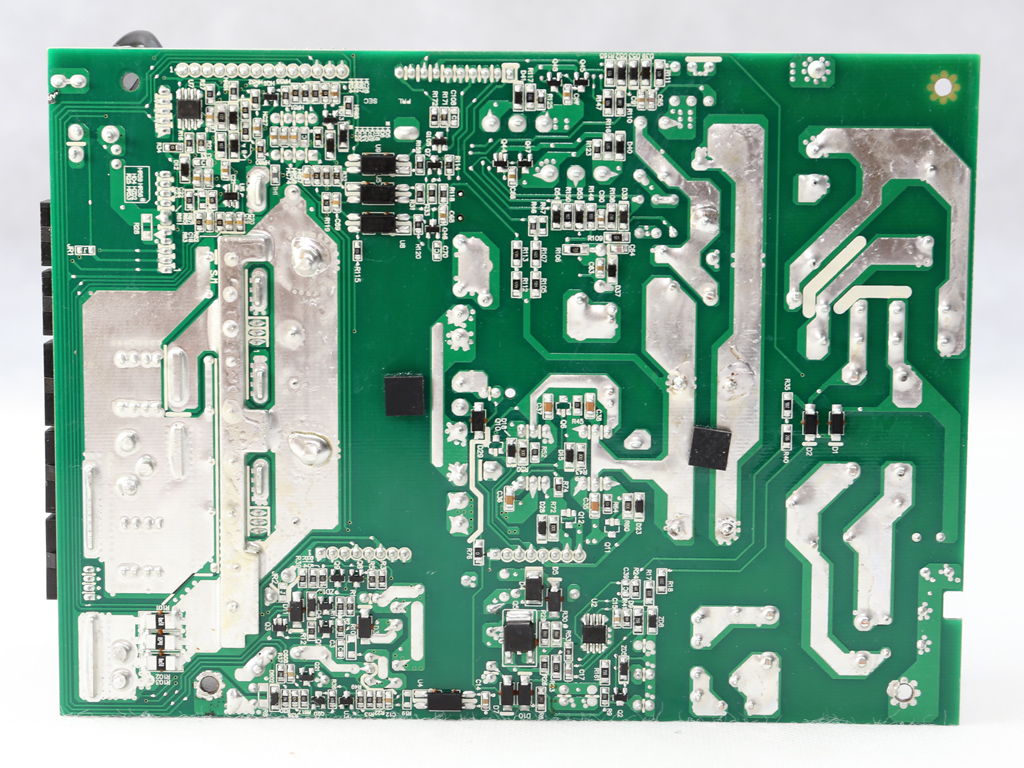
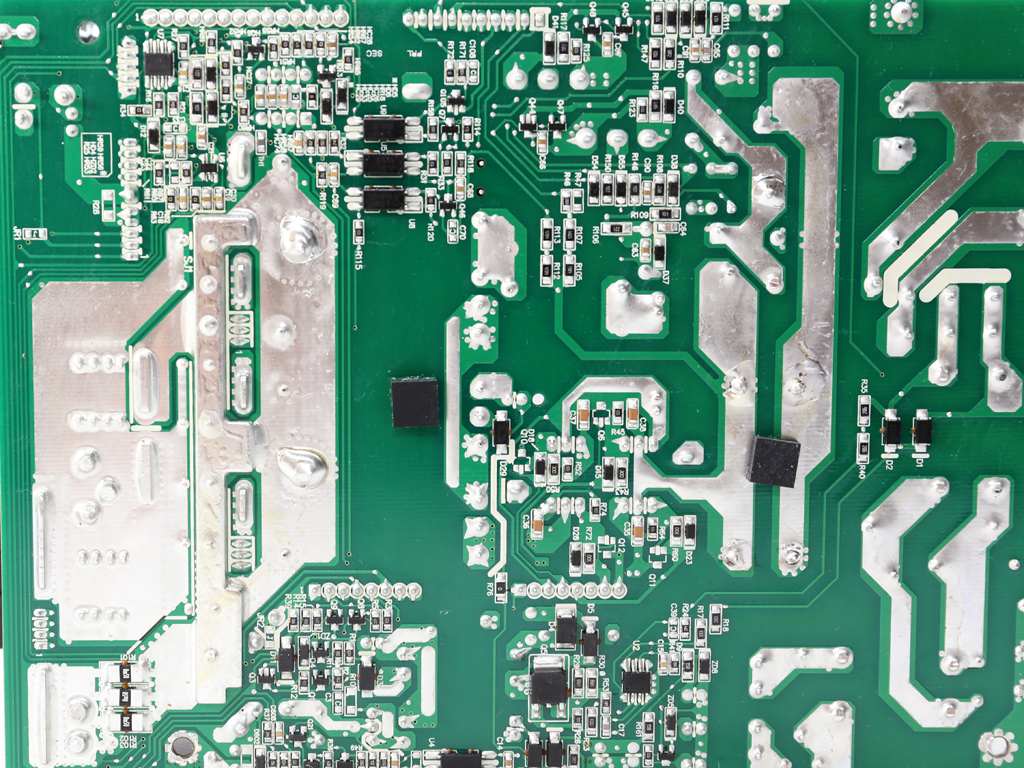

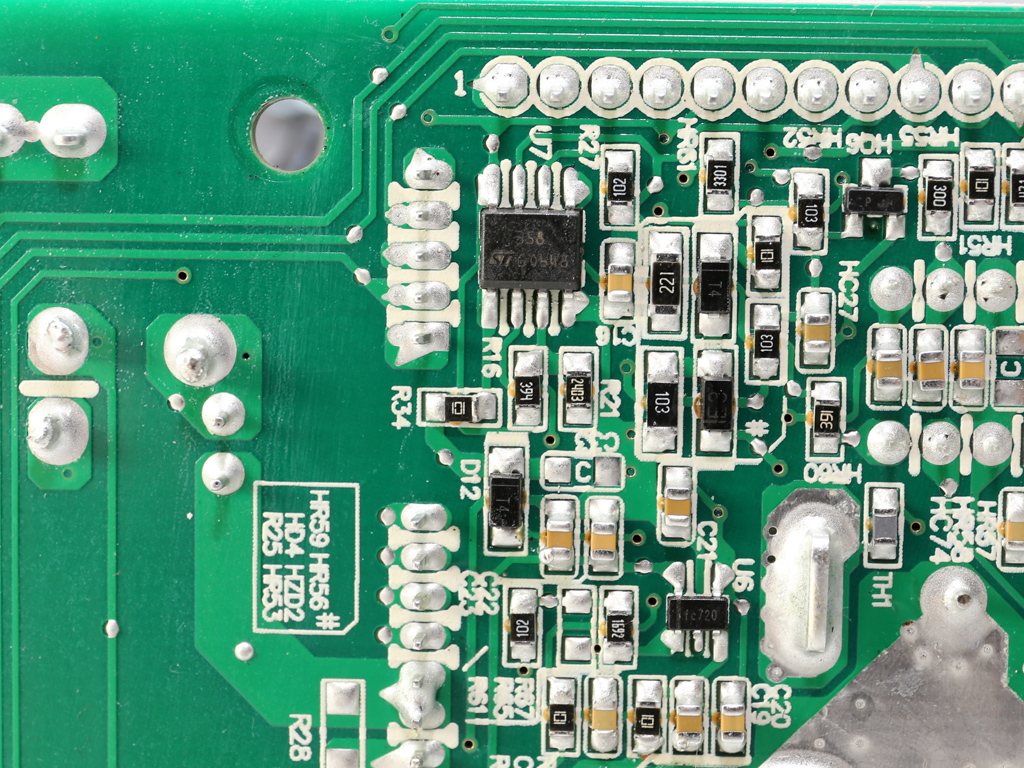
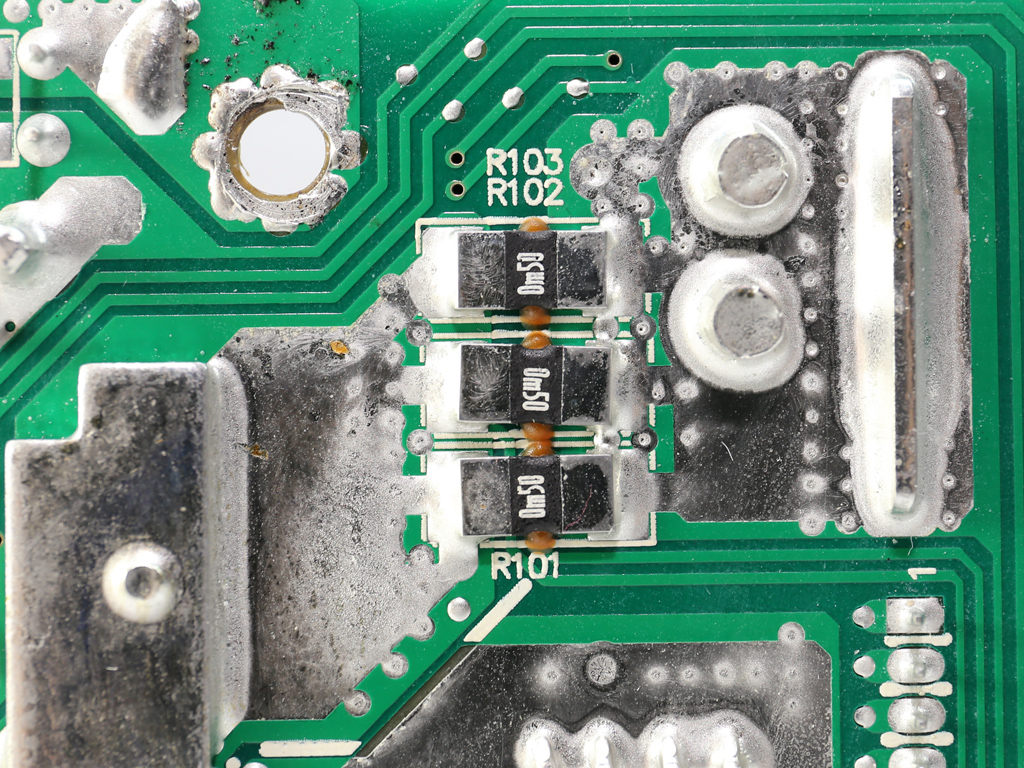
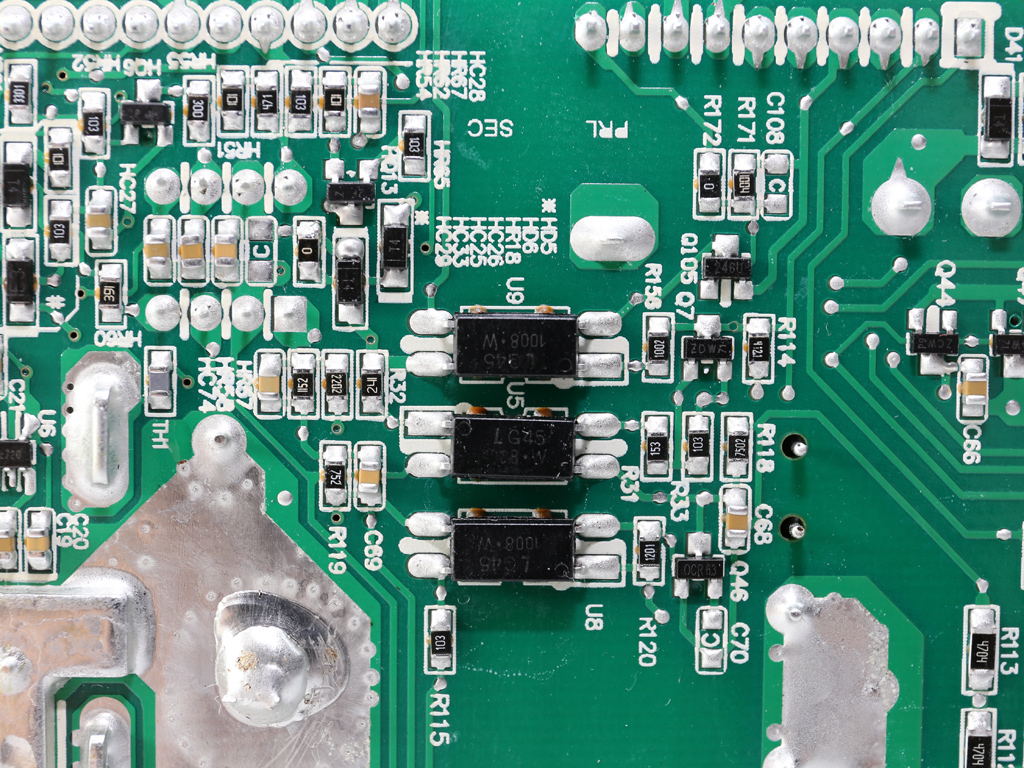
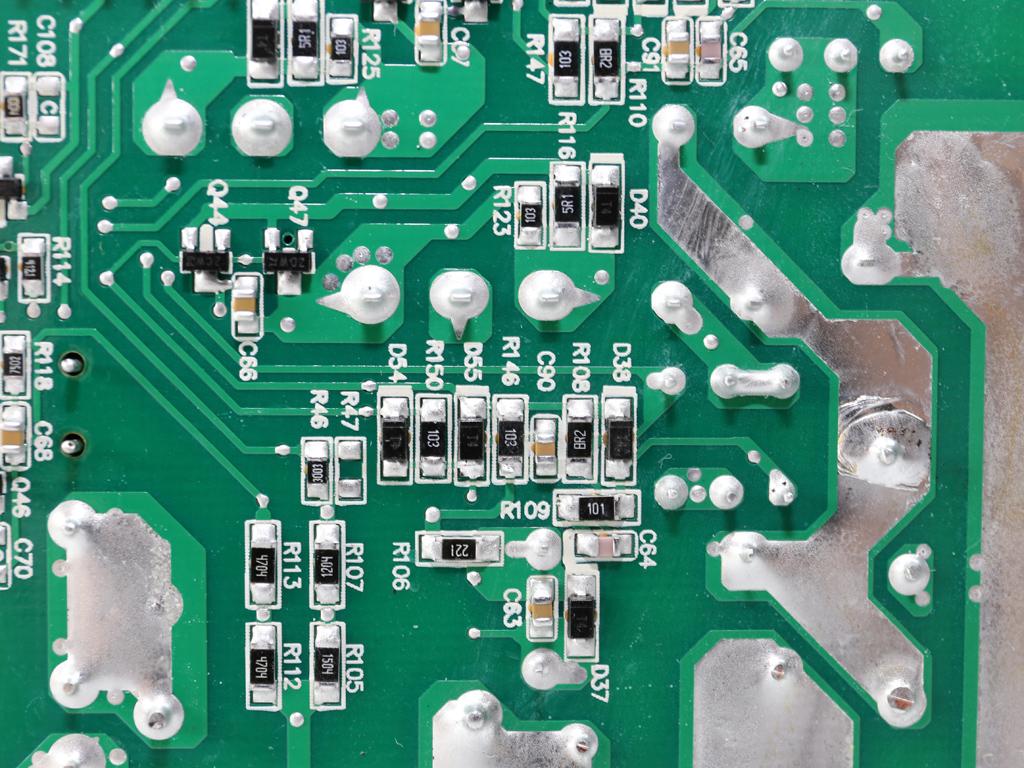
CWT's soldering quality is very good. The company has a solid production line with effective QC.
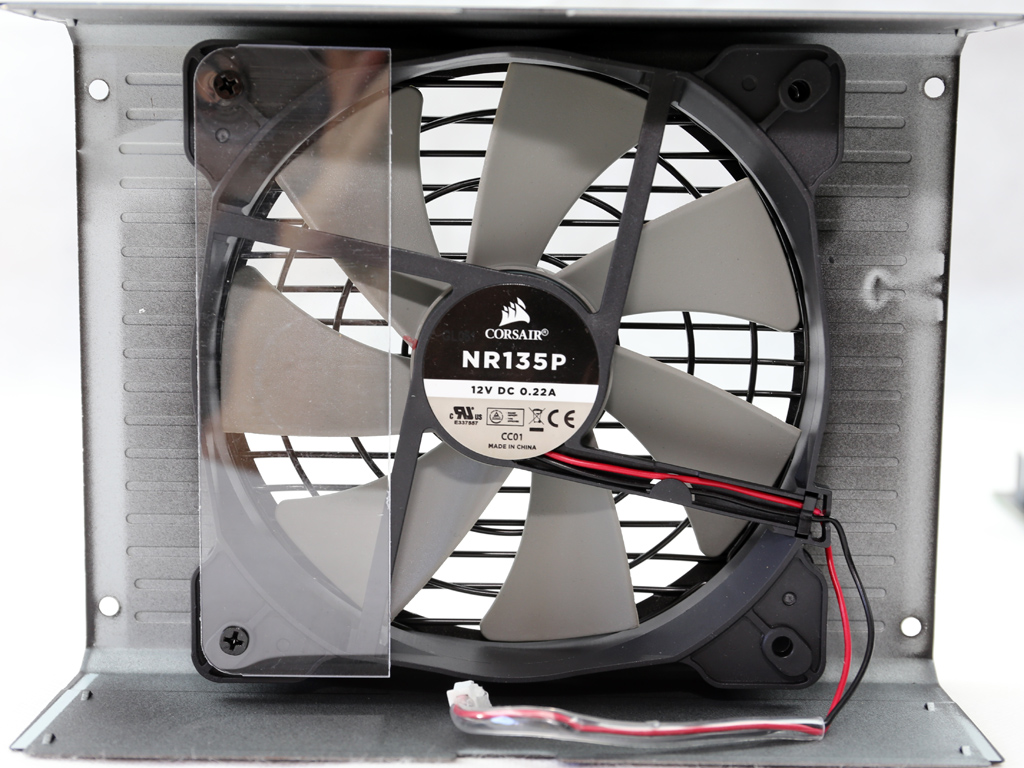
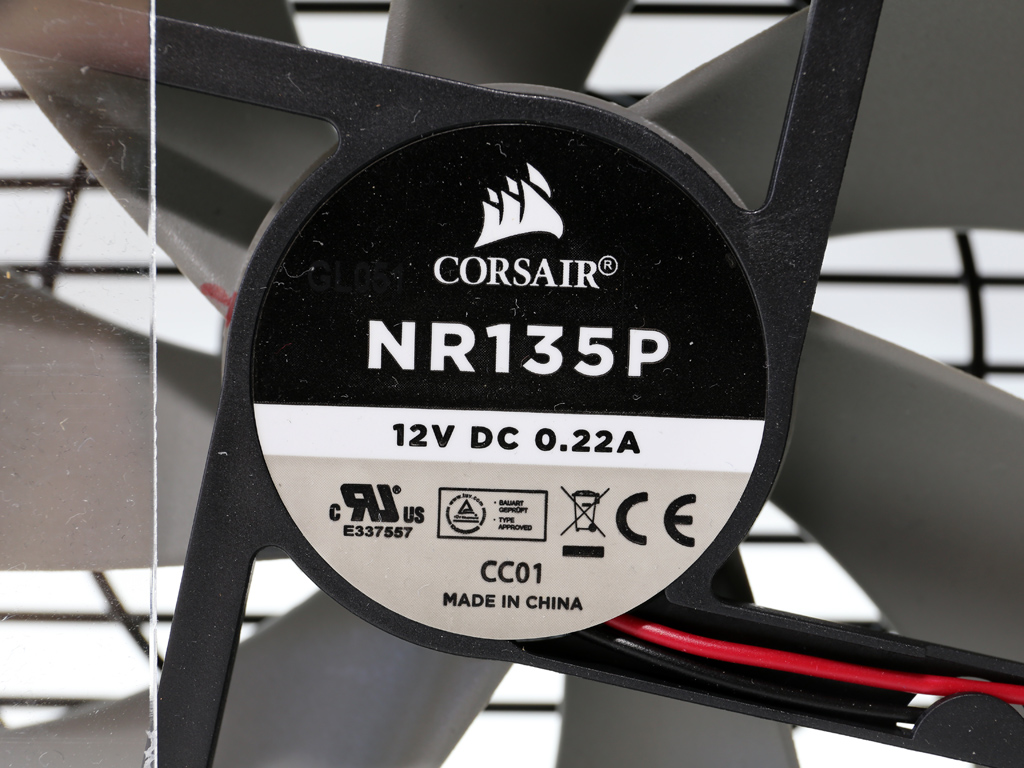
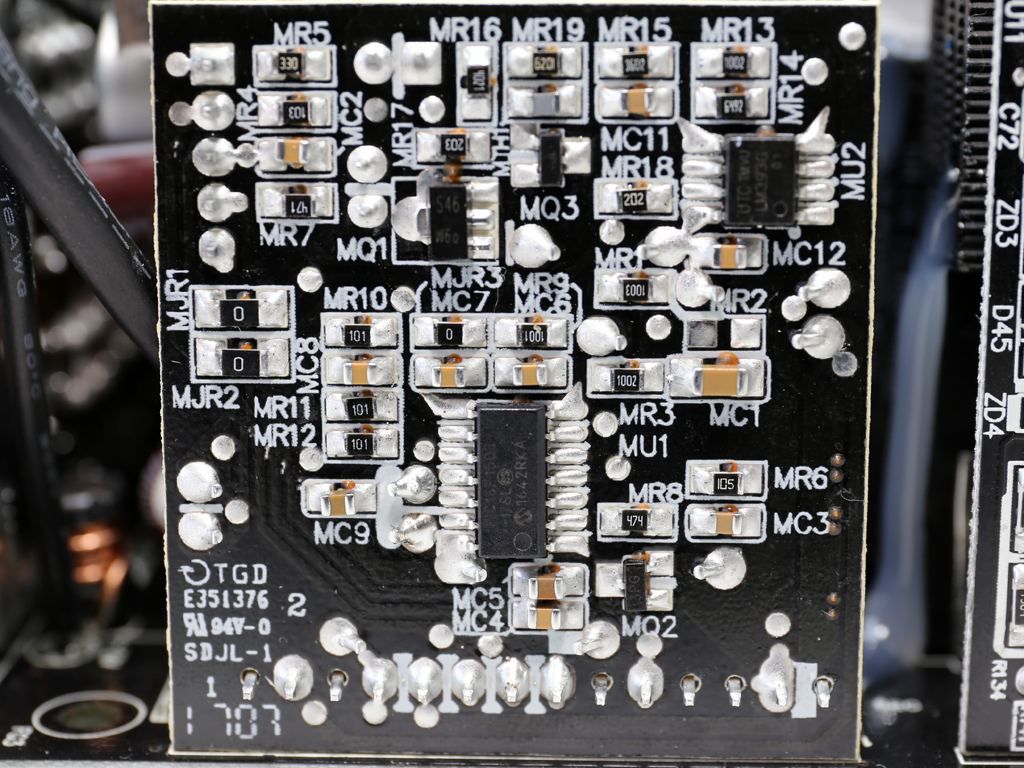
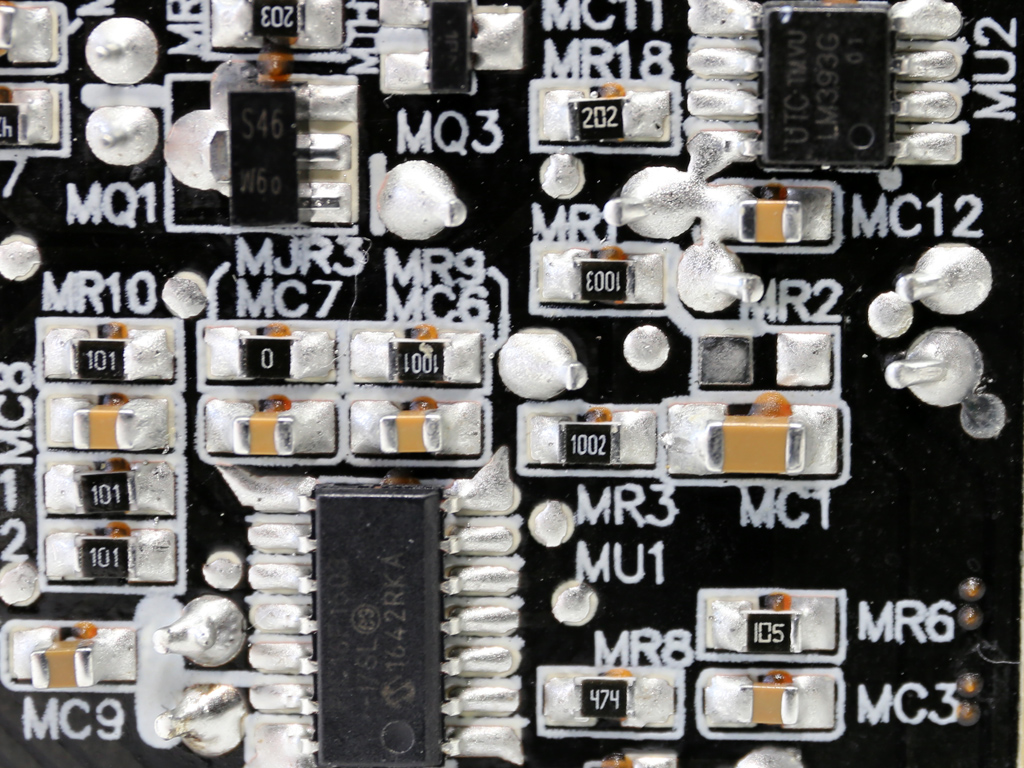

Corsair uses a Microchip PIC16F1503 to control fan speed. This allows it to adjust the fan profile easier and more effectively.
We find a NR135P fan (135mm, 12V, 0.22A) installed. Thanks to its FDB bearing, it should last a long time. In general, this is a slow-spinning fan that doesn't make much noise, even at full speed.
MORE: Best Power Supplies
MORE: How We Test Power Supplies
MORE: All Power Supply Content
Current page: Teardown & Component Analysis
Prev Page Packaging, Contents, Exterior & Cabling Next Page Load Regulation, Hold-Up Time & Inrush Current
Aris Mpitziopoulos is a contributing editor at Tom's Hardware, covering PSUs.
-
davidgirgis In the Conclusion, 'TO' should be 'To'; and 'demands' should be 'depends'; and 'product' should be 'protect'.Reply -
grozzie Not another plug/connector change!. I, like many people on this site, build custom PC's, part of which includes sleeved cables. One bug bear is 2 wires into 1, which is a in in the arse. I personally like the HXi series of Corsair PSU's which only have one such connection. I also think the 24 pin ATX supply is outdated and needs revision. I can't see the point of supplying motherboards with 3.3 and 5v rails. If only 12v was supplied with any or all voltage reduction made on board life would be so much simpler and neater. By providing more noise reduction at source (the PSU) gives Motherboard manufacturers an open cart to reduce the quality of voltage regulation i.e capacitor quality, on the motherboard. Is there really a need for another PSU on the market?Reply -
panathas On the specifications table it says: "Efficiency: 80 PLUS Gold, ETA-B", which is wrong since this is a Platinum PSU.Reply -
10tacle ^^What are you talking about? Register and get on Corsair's support forums:Reply
https://sso.corsair.com/idp/AuthnEngine#/authn
Of course they have a customer support phone number: 888-222-4346 (North America customers).
Anyway, back on topic, first the $#@! miners have negatively impacted our GPU market, and now they may negatively impact our PSU market. :fou: What makes this really aggravating is that the PSU makers really can't prove a PSU was used 7x24 for heavy mining operation.
Worse, even if PSU vendors like Corsair offer a mining-specific PSU for less money with just say a 2-3 year warranty, nothing would stop the miners from buying the full 10-year variant. This mining craze is becoming a real pain to we PC enthusiasts. -
10tacle You are making everyone's head hurt. If you want to complain about Corsair, then do so on Corsair's customer support forums and social media. Also, just FYI, Tom's only reviews what is sent to them. They do not go "cherry pick" buy products and review them. For someone who is an alleged "original reader" of Tom's I'd have expected you to understand that.Reply -
jonnyguru Reply20057343 said:Not another plug/connector change!. I, like many people on this site, build custom PC's, part of which includes sleeved cables. One bug bear is 2 wires into 1, which is a in in the arse. I personally like the HXi series of Corsair PSU's which only have one such connection. I also think the 24 pin ATX supply is outdated and needs revision. I can't see the point of supplying motherboards with 3.3 and 5v rails. If only 12v was supplied with any or all voltage reduction made on board life would be so much simpler and neater. By providing more noise reduction at source (the PSU) gives Motherboard manufacturers an open cart to reduce the quality of voltage regulation i.e capacitor quality, on the motherboard. Is there really a need for another PSU on the market?
Bro.. You're all over the place. :D
So only the 24-pin is pin incompatible with the Type 3 cables. And yes... it's because of the extra sense wires. If you're really going to get all wound up about having to do 2-to-1 wires when doing custom cables, you know what you should do? Don't do 2-to-1 wires. They're only sense wires. The lack of them doesn't prevent the PSU from working. It'll just make your voltage regulation "as bad" as any other PSU that doesn't have the sense wires.
Yes. The ATX spec is out of date. But Intel wrote it and nobody is going ot implement a new standard without Intel's blessing. They even released a whole new ATX design guide last month that changes almost everything (T1 timing, T3 timing, standby efficiency..) but DID NOT TOUCH the pinout (they made -12V "optional", but that's hardly much of a change).
-
beatnutz Jellwood: I find it hard to believe that someone who does not know how to write a proper sentence is preparing any students for anything. Let alone the ACT.Reply -
beatnutz Jellwood: I find it hard to believe that someone who does not know how to write a proper sentence is preparing any students for anything. Let alone the ACT.Reply
